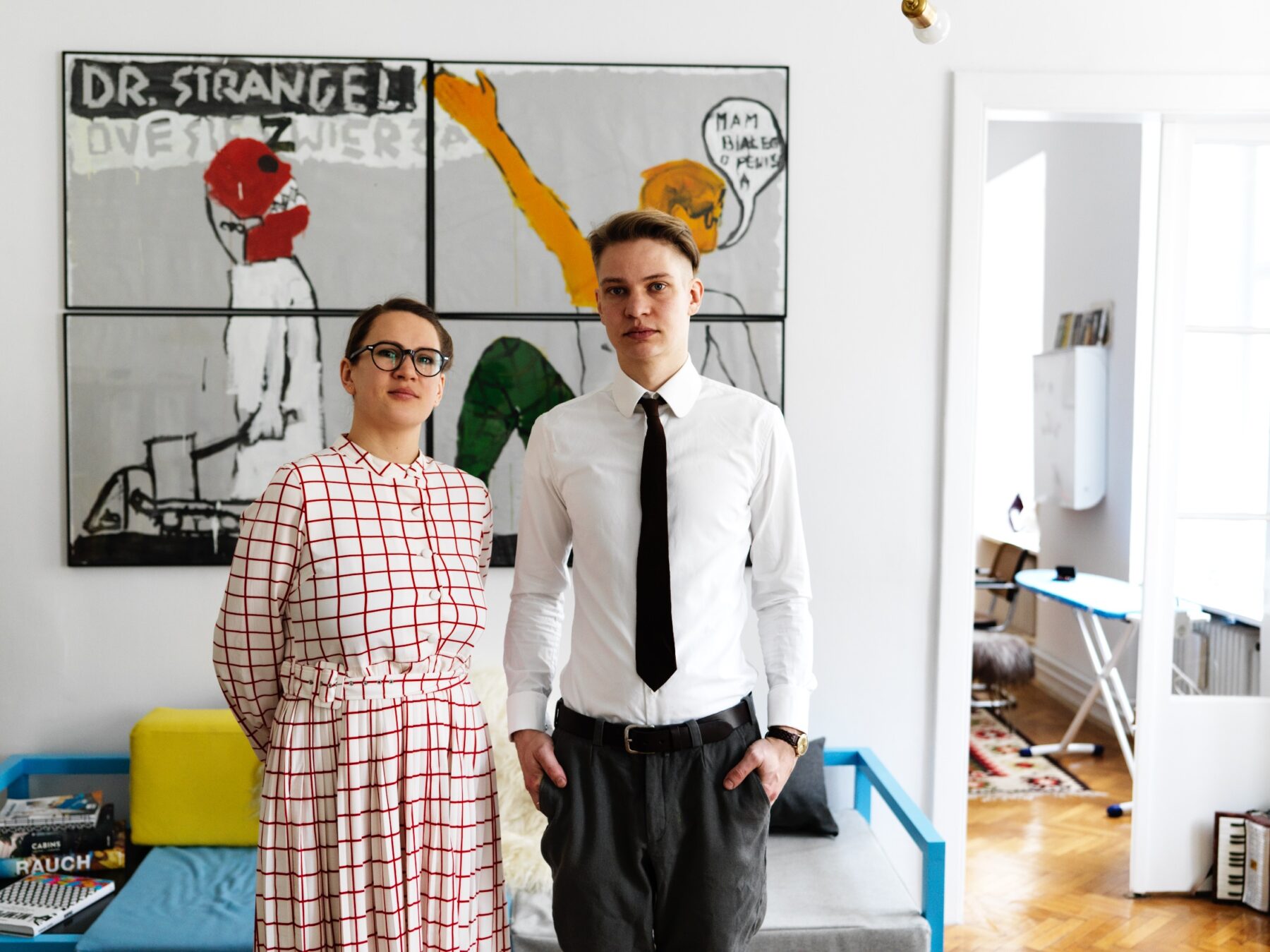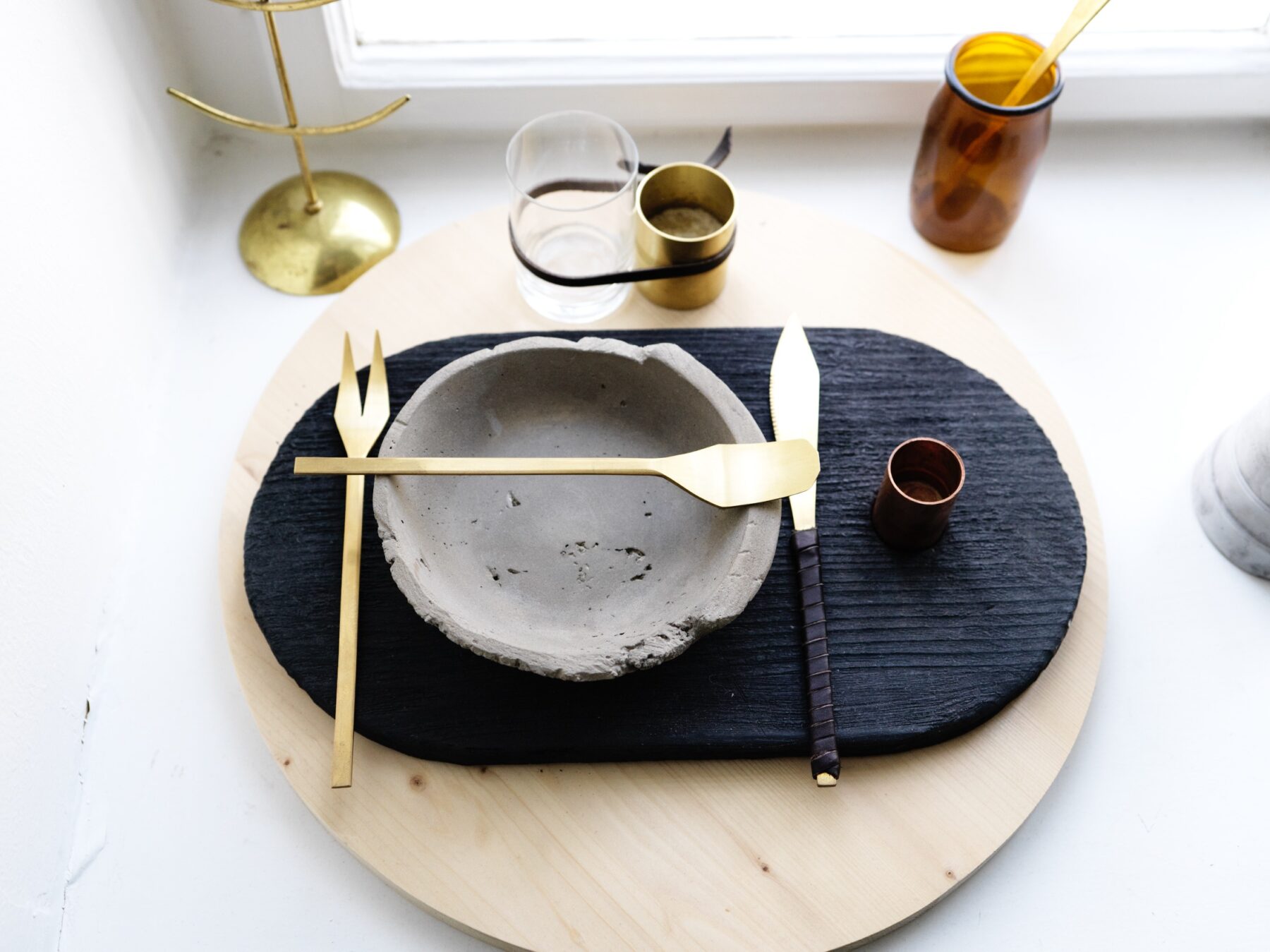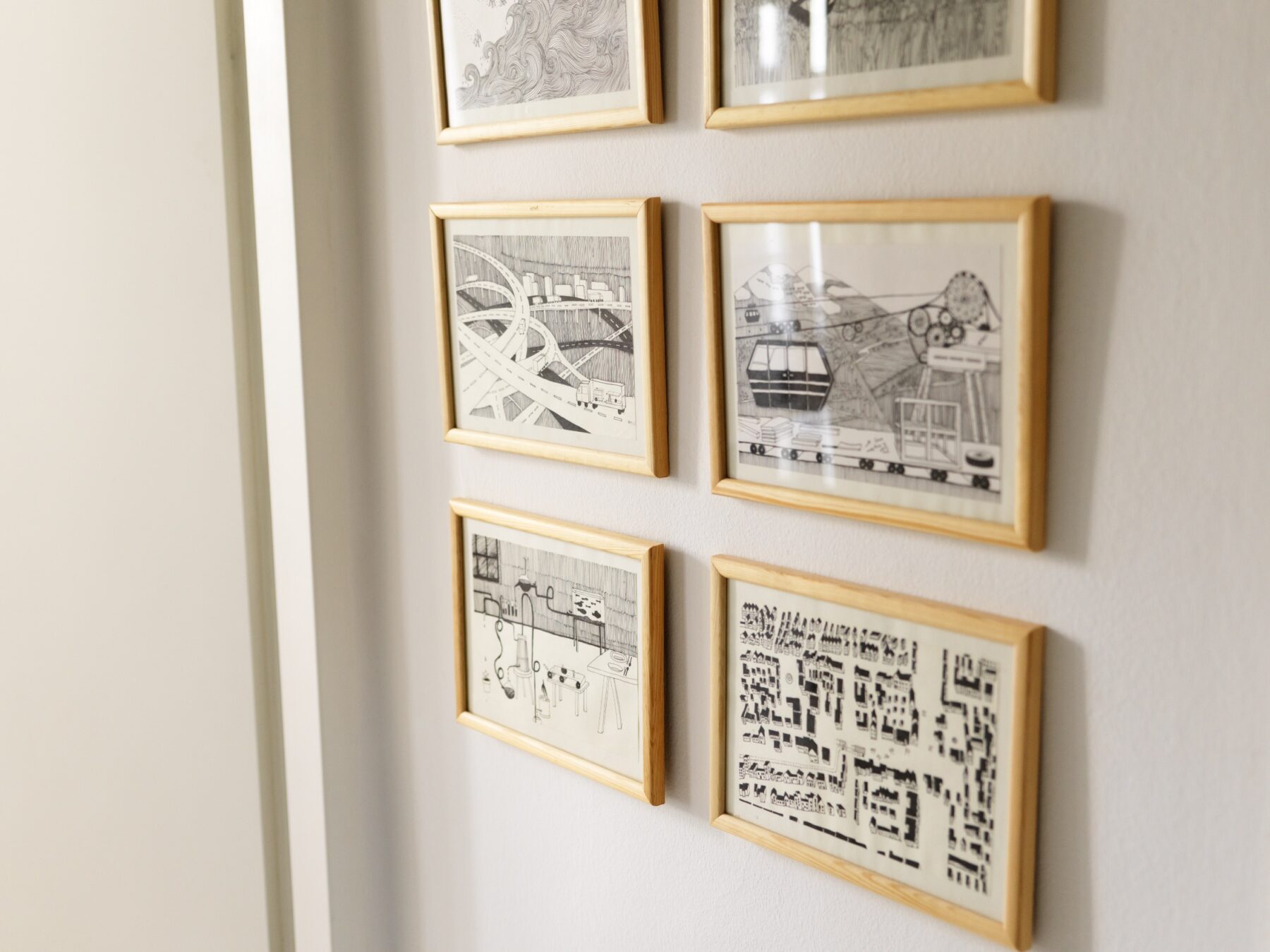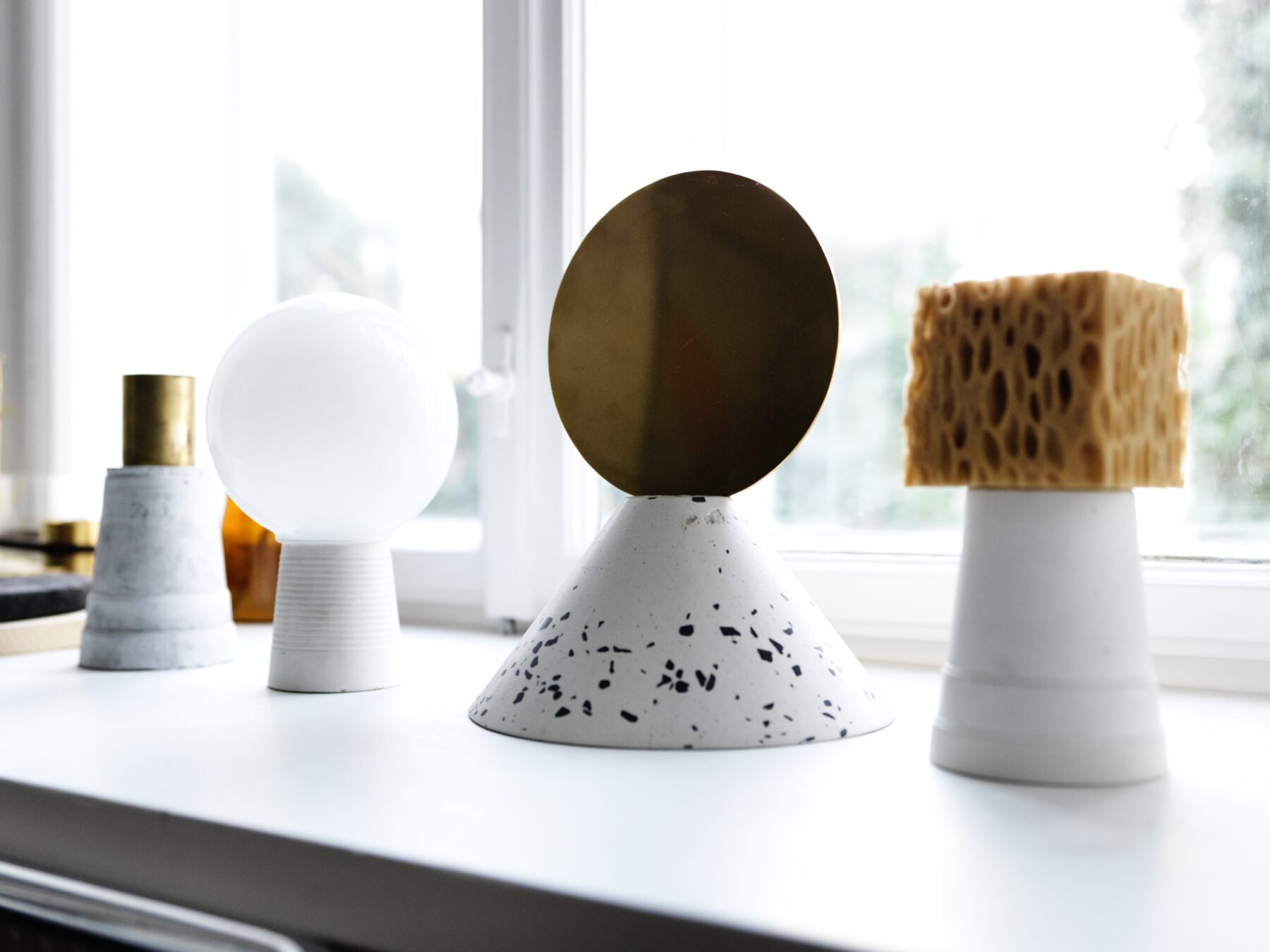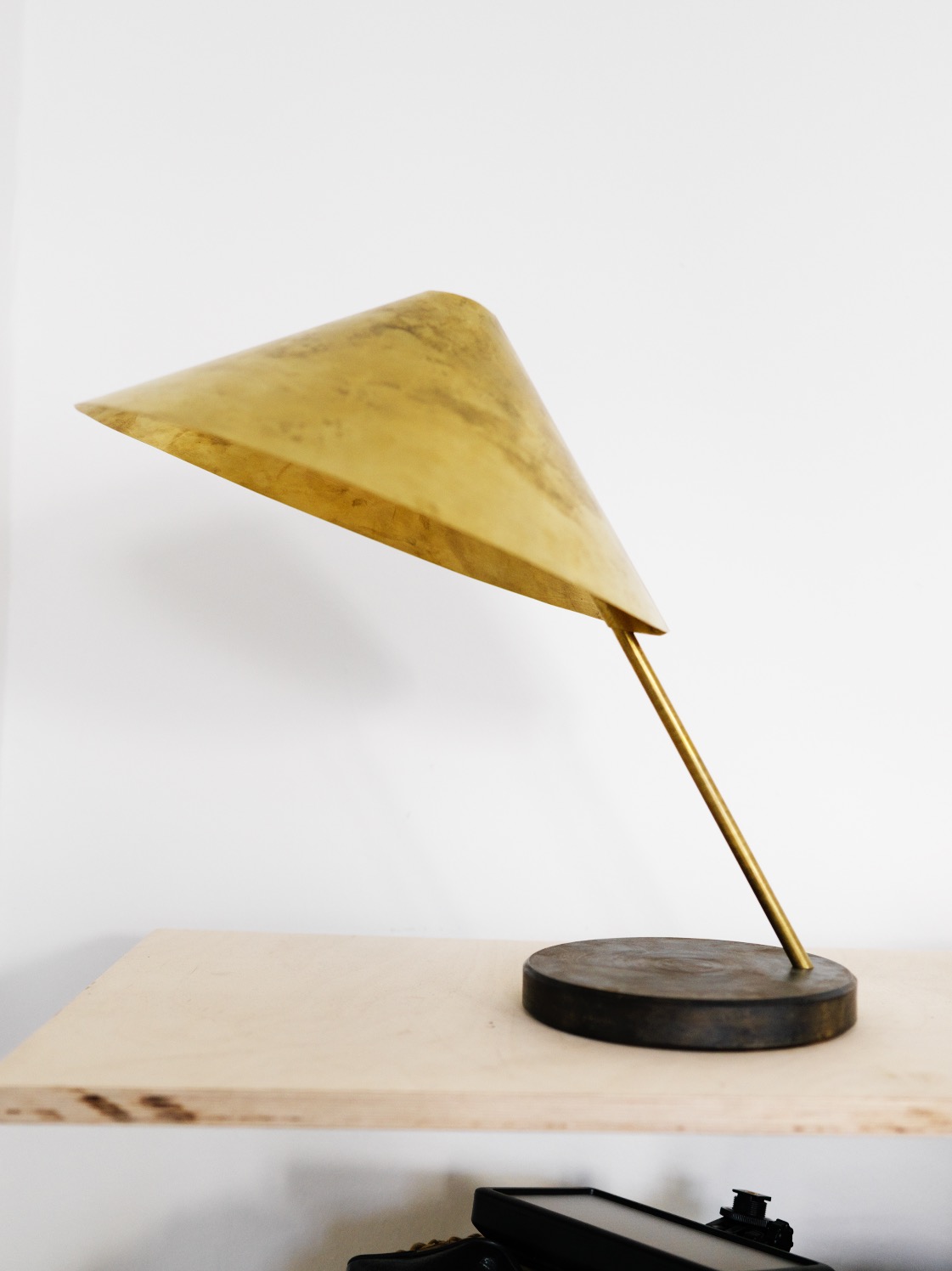Poetic solutions for problems that one might not even be aware of. The result? Maciej Chmara and Ania Rosinke’s sophisticated design, that is so much more than a range of aesthetic services.
To expand the range requires a lot of research and innovation, nevertheless, “chmara.rosinke” do not lose the inherent grace of their objects and designs. The newest project from both these Polish designers, “Cucina Futurista 2.0”, shows this method, in which their ideas are transformed into a piece of performance art. Along with chefs and other creatives, they consider the cutting edge of haute cuisine and develop an integrated concept for an stimulating evening. As Ania claims in the interview, “from the feel of the fork to the choreography of the waiters” everything should work perfectly.
After their studies in Danzig and Linz the pair move to the Austrian capital where they opened their own offices in 2012. Inspired by socio-cultural themes, and equipped with an ecological consciousness and a clear design language, they prove that function, aesthetic and a clever sense of humor can go hand in hand. Their range of customers is just as varied as the design duo’s schools of thought: in recent years Hérmes, COS and the Caritas commissioned Ania and Maciej with projects that lie on the borders of art, architecture and interior design.
FvF met Ania and Maciej in their historic apartment in the seventh district of Vienna, where they live with their two children. We accompanied them to their studio and Gallery Rauminhalt, where a selection of duo’s conceptual mastery is presented.
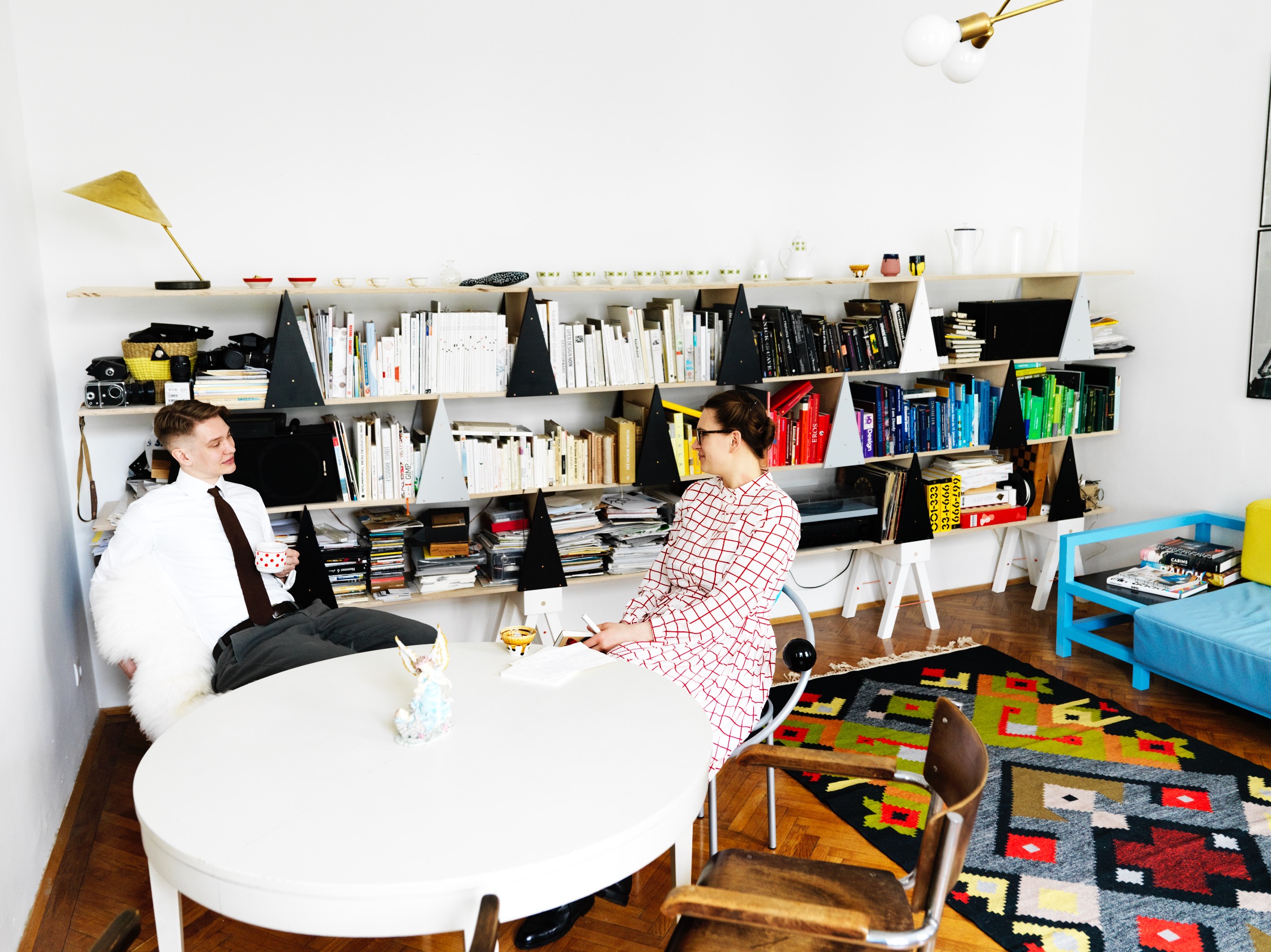
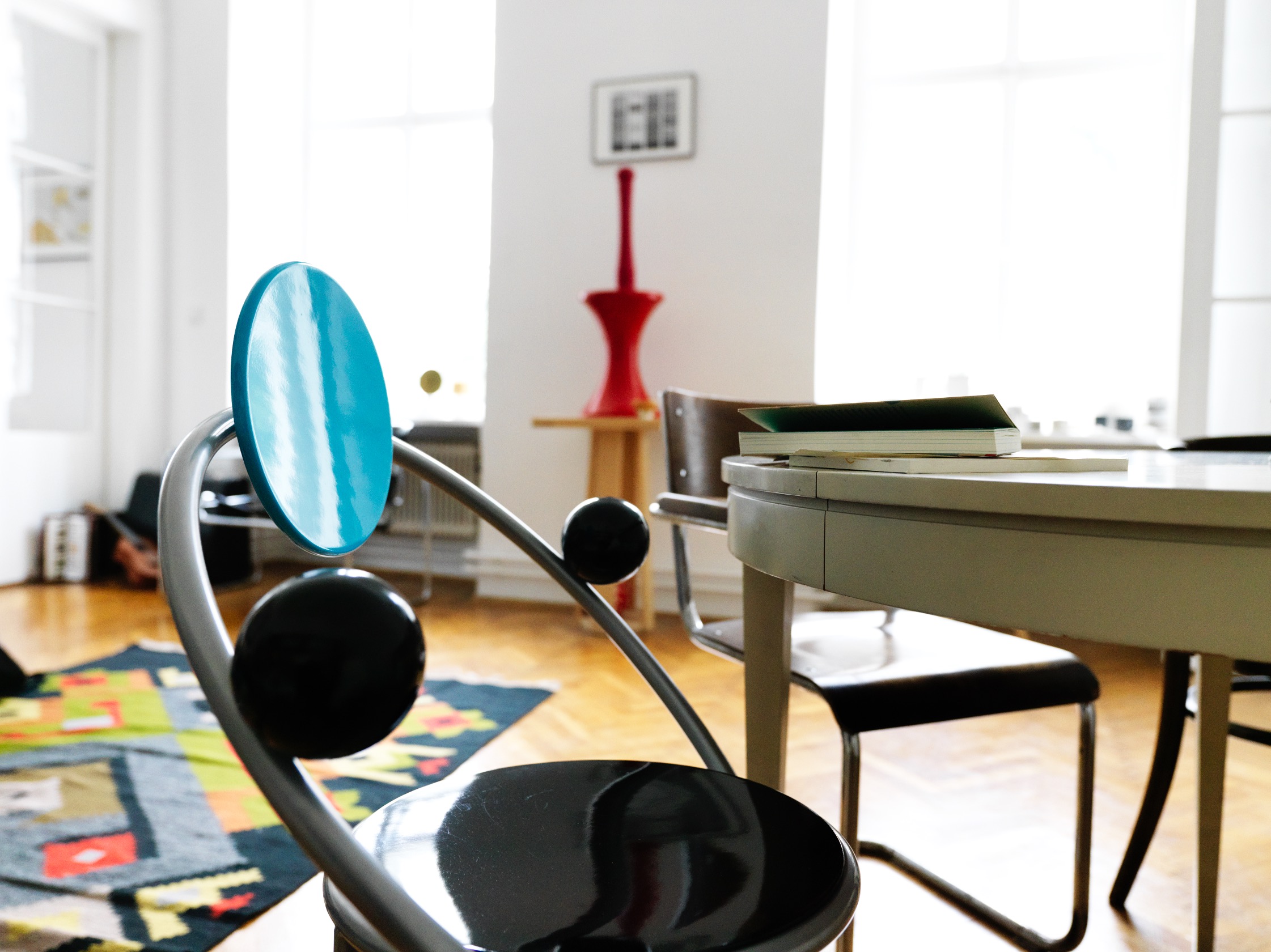
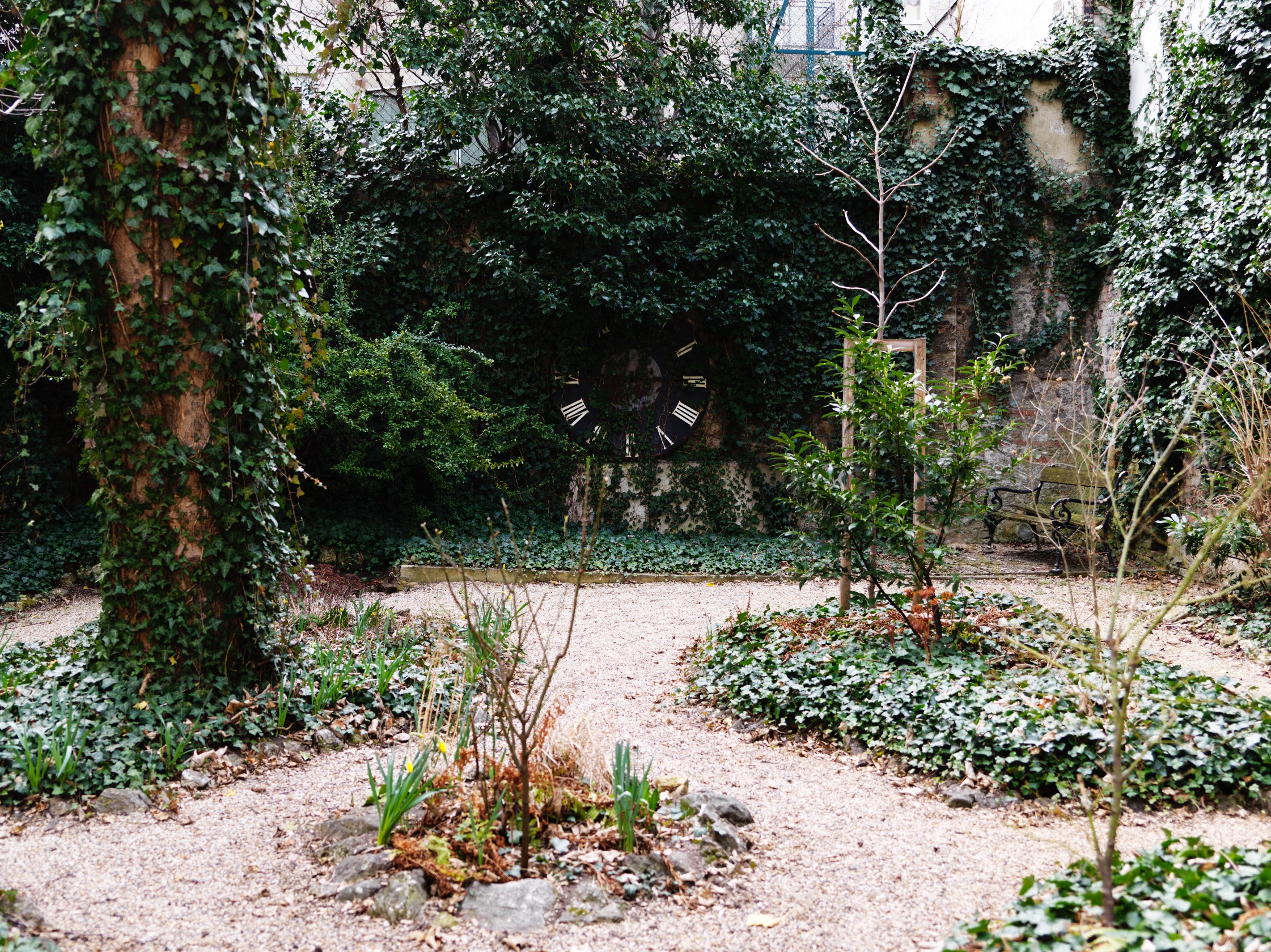
-
It’s nice to finally meet you. You design approaches are incredibly exciting. Can you briefly how your approach has come about and your development in general?
Ania: Maciej and I first met at the Academy of Fine Arts in Gdansk as fellow students. We studied interior architecture there, but the courses had a strong focus on art and photography.
Then together we went to the University of Art and Design Linz, where we decided to study room and design strategies. The course of study focuses strongly on issues of space in the artistic sense. When we moved to Vienna a few years later, our academic paths diverged – Maciej enrolled at the Technical University, I went to the University of Fine Arts for architecture.
Maciej: That was six years ago. We immediately loved the city and we consciously decided to stay here. In 2012 we decided that after working together for so long, we should open a joint office without delay.
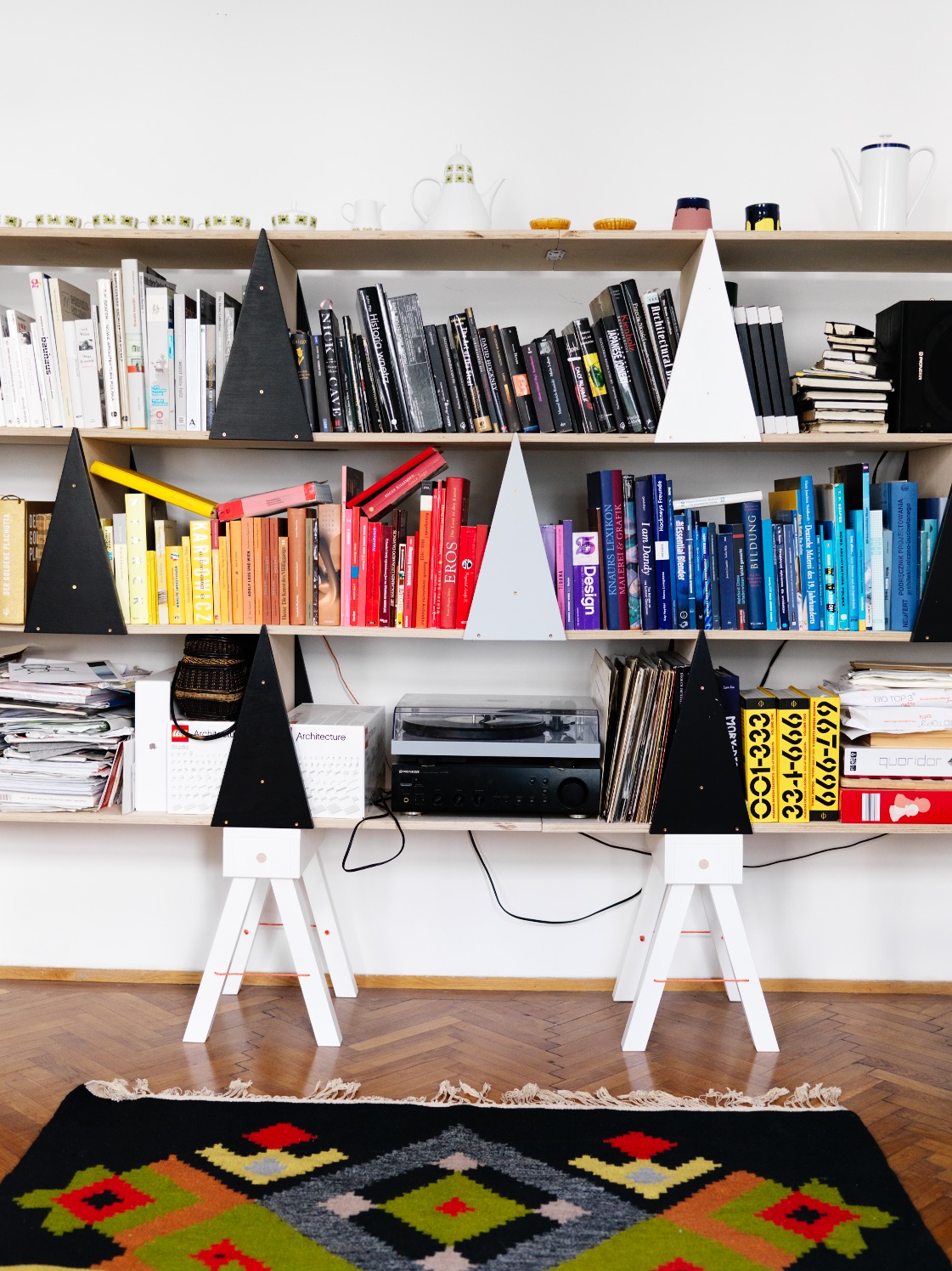
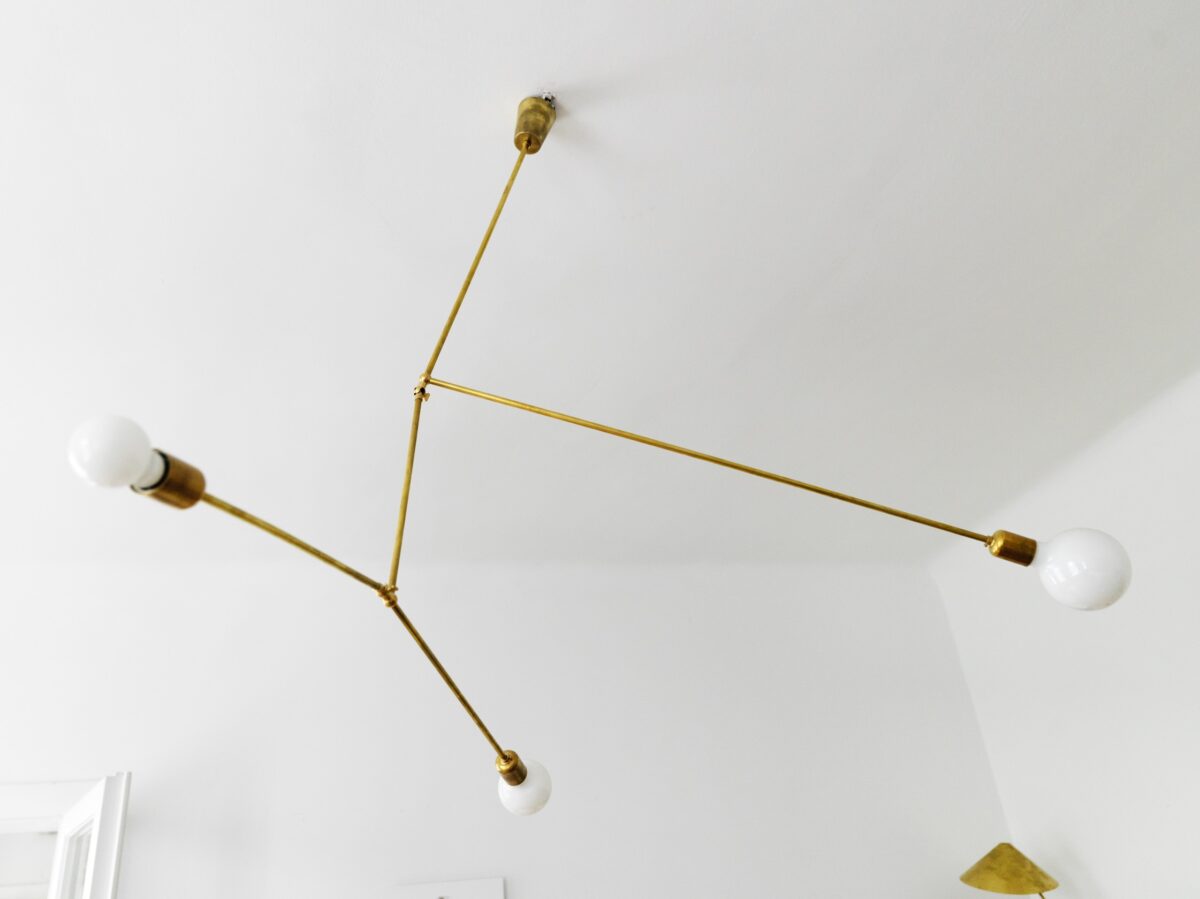
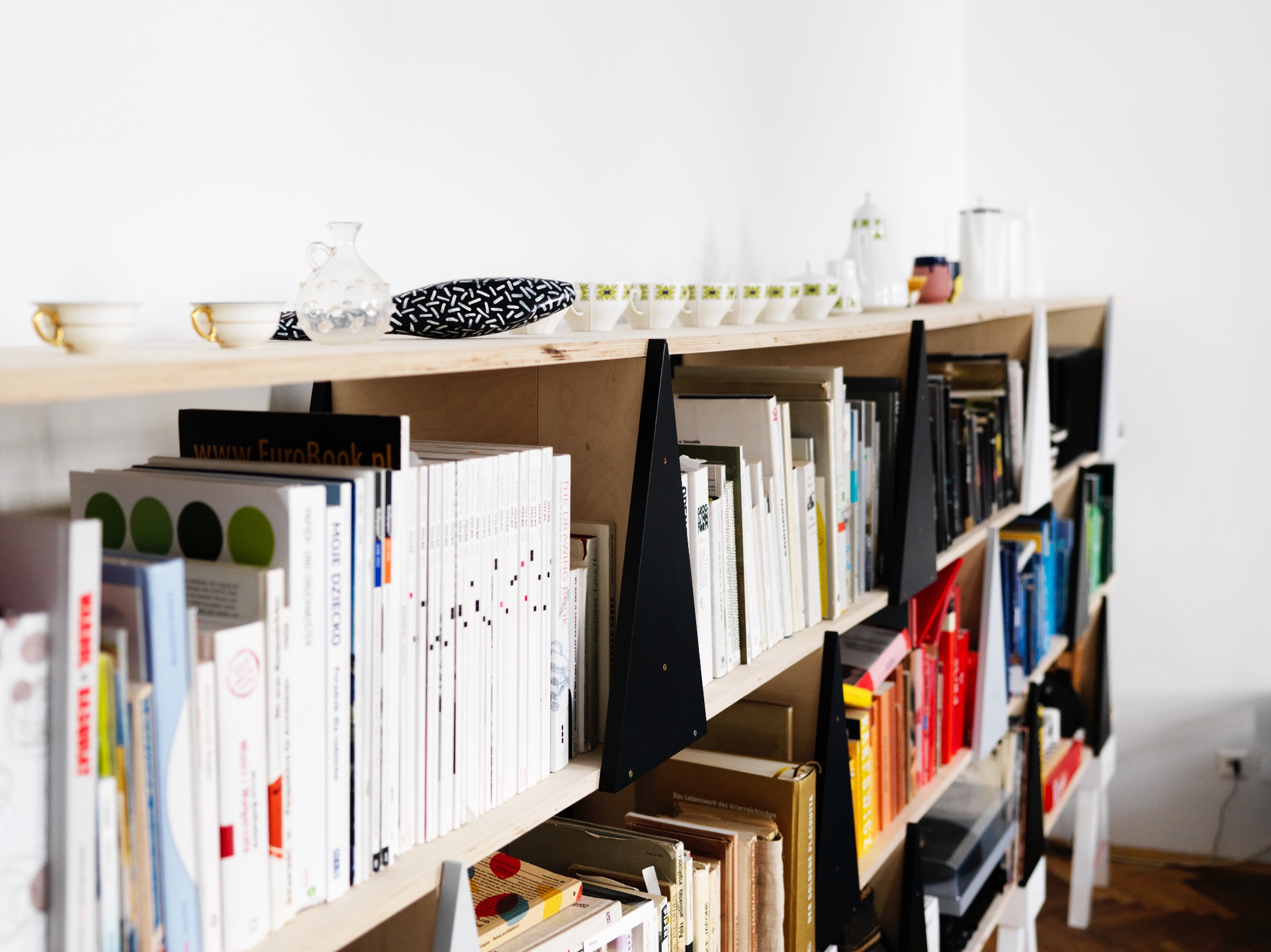
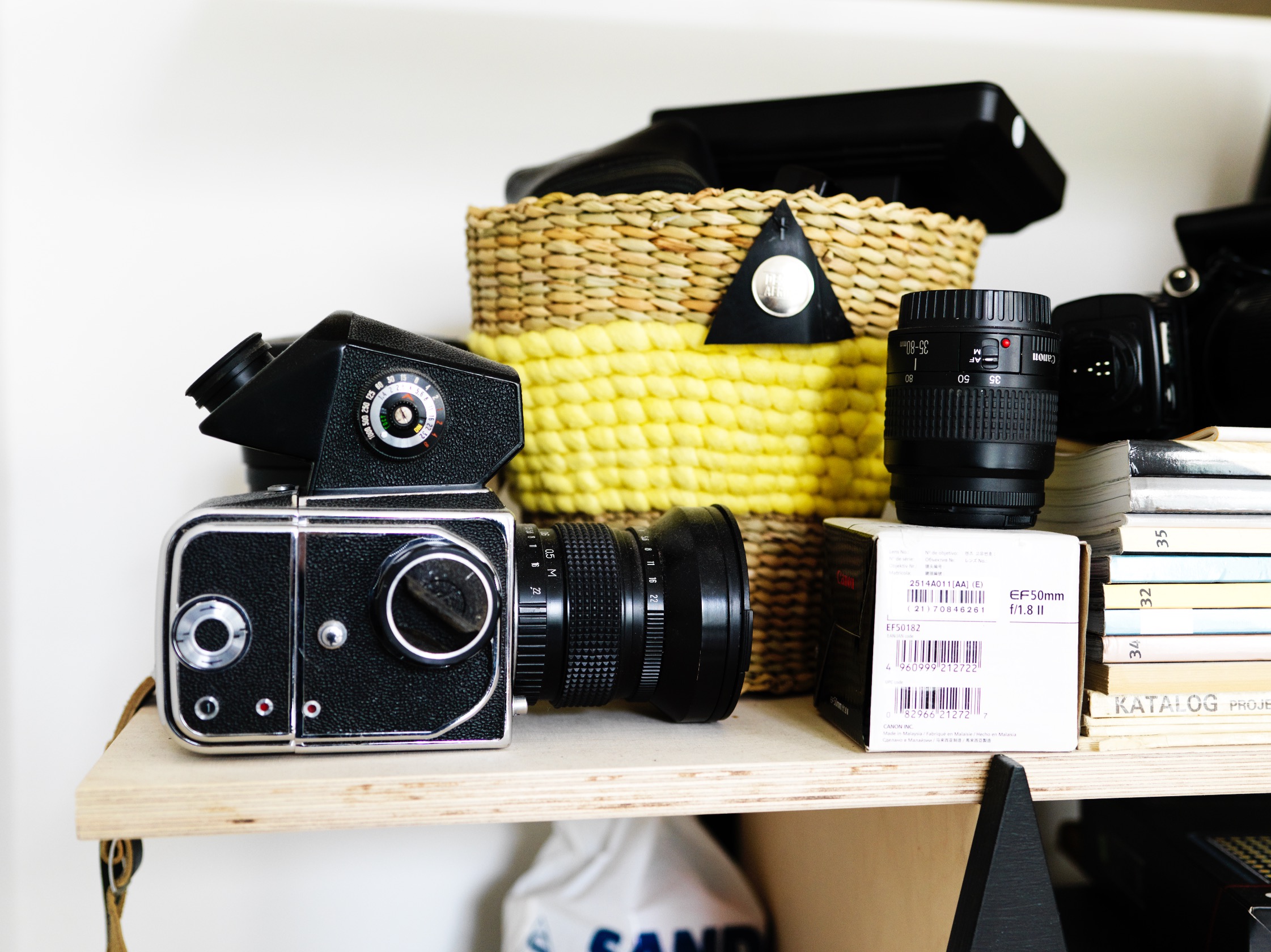
-
How would you describe the work of chmara.rosinke to someone who has never heard of you?
Maciej: This isn’t very easy in reality. I regularly say: We make furniture and interior objects, some with a conceptual approach, as well as pieces for collectors and galleries. We call what we do conceptual design. Our projects exist somewhere in an intermediate area, where it wouldn’t make sense to mass-produce them.
-
What developments have you seen in the creative scene in your native Poland and how has that influenced you?
Maciej: The Polish creative scene is in Warsaw right now and has really grown in the last few years. However, in Danzig design is still not a big deal in contrast to graphic design, music and photography.
Ania: Our creative approach primarily comes from our own pursuits. We’ve continued to train ourselves through exhibition visits and travel
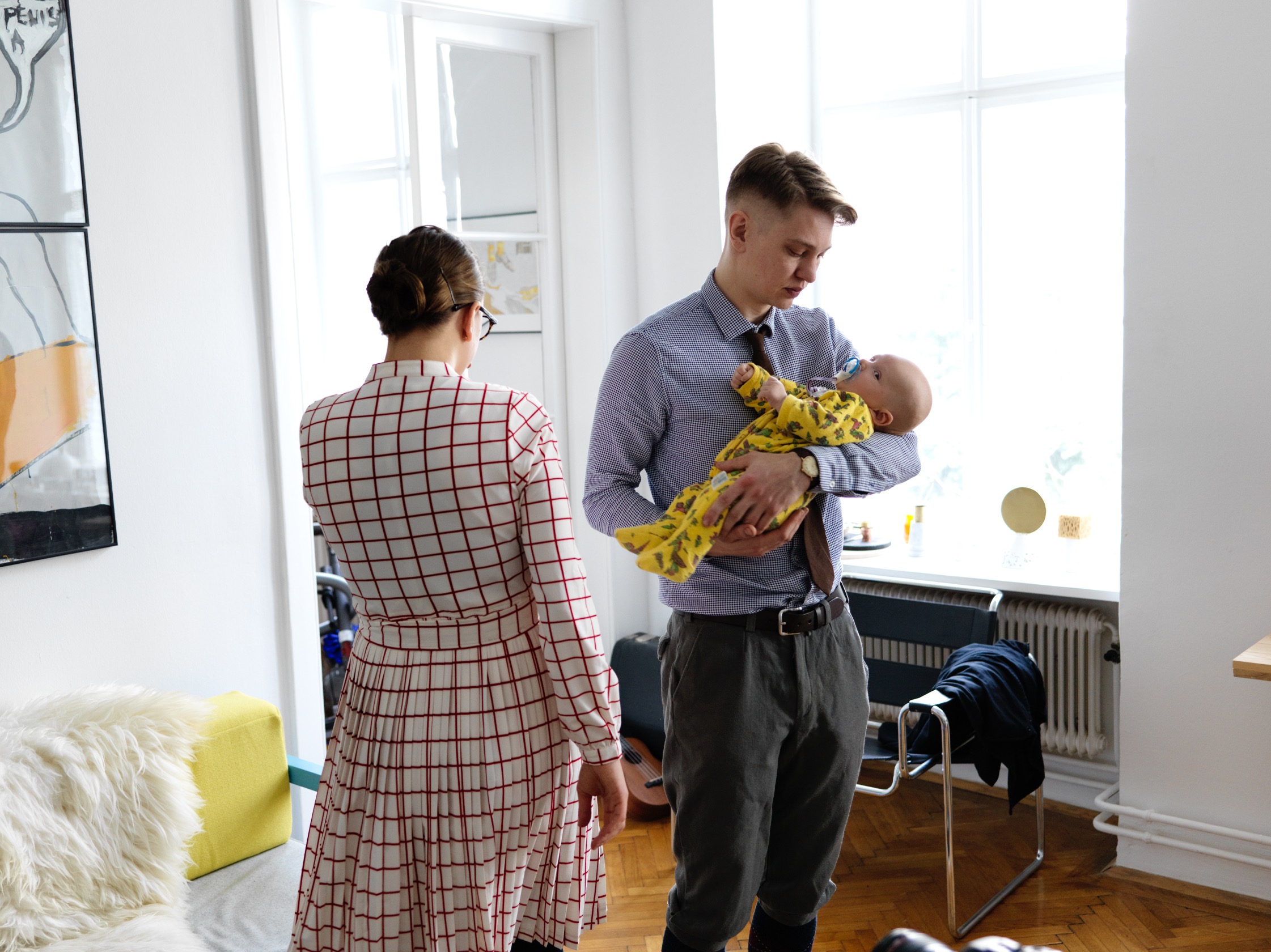
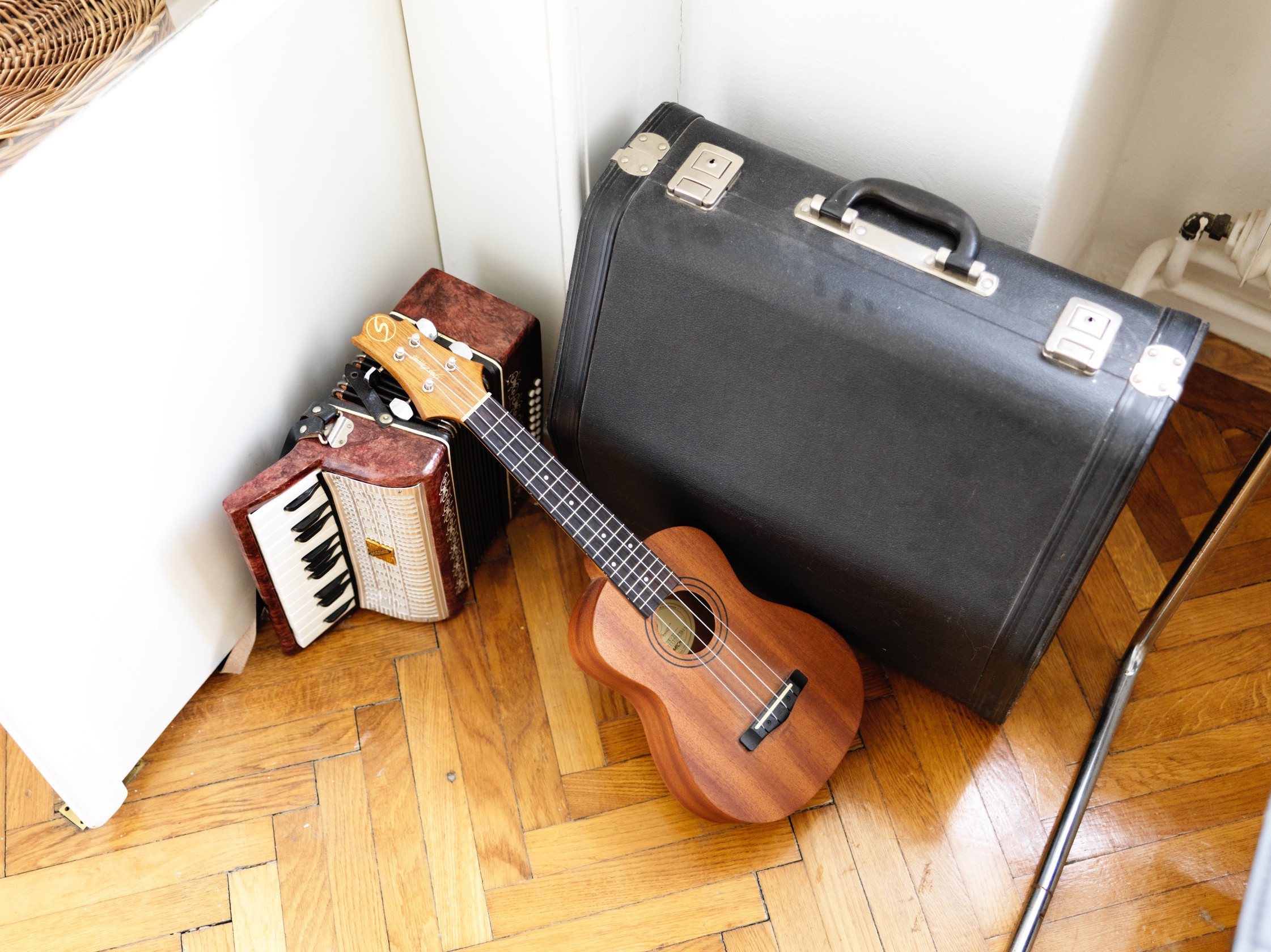
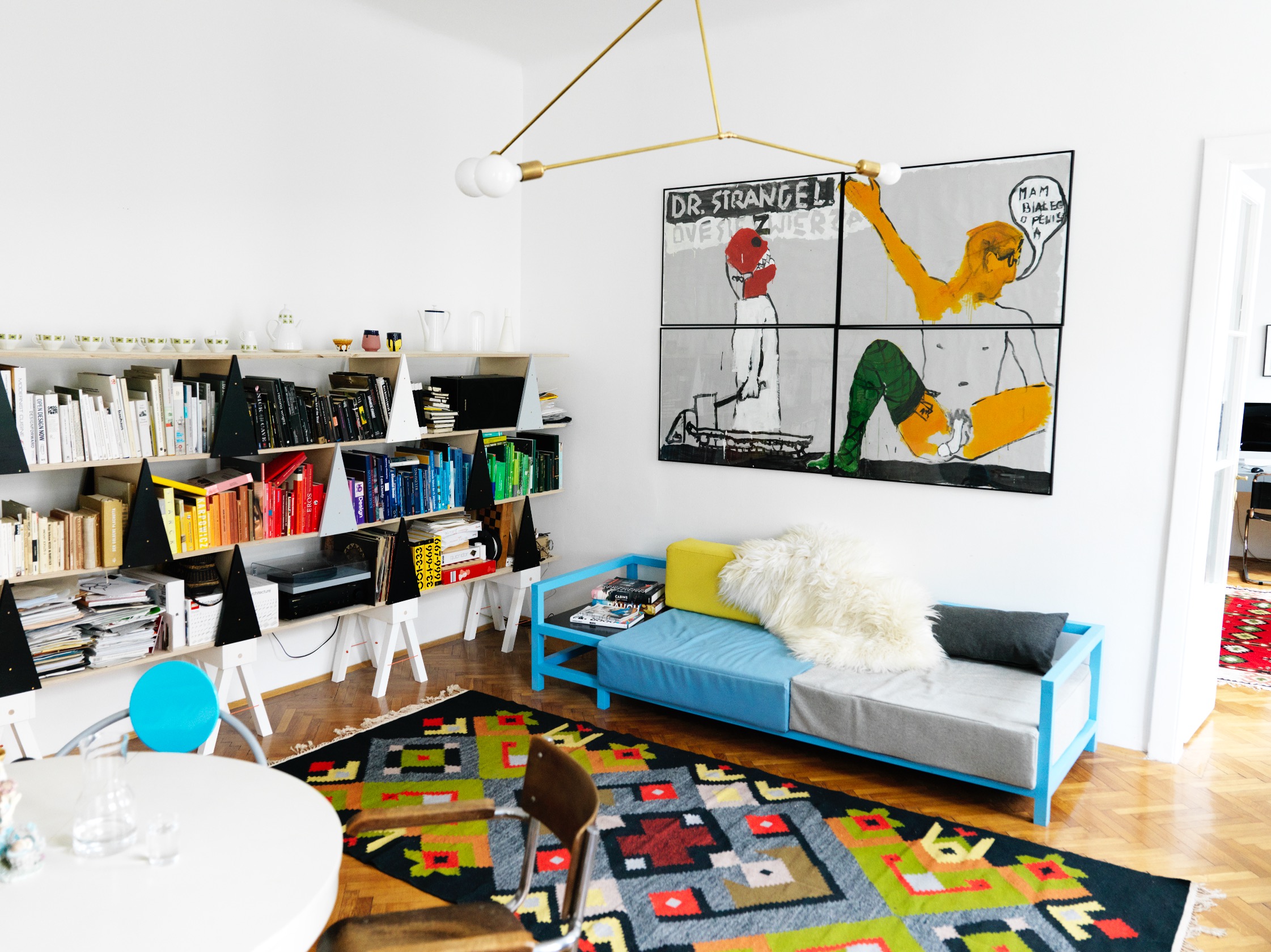
-
You said that you deliberately chose Vienna as a city and place of residence. The Viennese art and creative scene is a topic of ongoing discussion. How do you feel about the statement that as a Viennese creative, one first has to establish themselves abroad before you can be taken seriously in the local scene?
Maciej: We had already lived in Vienna for a few years before we got our first commissions. At the same time, we were winning design prizes in cities like Berlin or Paris. So, it’s true that you’re noticed in Vienna only after you’ve proven yourself somewhere else. But I don’t want to say this is negative. Vienna can’t provide the frame and size for commissions for conceptual designers like mischer’traxler, breadedEscalope or us – it just doesn’t work. The whole city would be full of strange objects. (laughs)
Ania: We also have to stress that the city of Vienna offers many support programs for creatives. Of course, this helps enormously.
-
In what form have you experienced this support?
Maciej: We were funded by the Vienna Business Agency and its creative center departure, for our project “Mobile Hospitality.” We’re constantly working on the development of specific ideas and use the support we receive to tease out the economic essence of this project.
-
How did the concept of “Mobility Hospitality” come about?
Ania: Maciej and I were invited by ArtDesign Feldkirch a kind of design location to develop a project in public spaces that could be also presented in a number of small towns. We didn’t want to create something controversial. Those kinds of art installations aren’t always welcome.
Maciej: During the realization of the project it was also about the active participation of the city. What defines the respective city and why are there so many old and inner cities that are reduced to a stage for Sunday strolls? These questions were really interesting to us. We believe that everyone can actively help shape a cityscape. For our project, we conceived of a table piled with food and drink that we brought as the basis for discussion: We brought tables and cake, the food and everything else was prepared on site.
Of course, you’re not obliged to go to this kitchen on foot, but the mobility aspect was created with the idea of making them visible as objects in the city. More and more elements came about – such as the foot pump to allow for running water. Clearly it would be easier just to integrate a bucket of water, but we wanted to consider the function and bring it to a consequential end. We are driven to perfection. We like to extreme-ify things, regardless if it’s the function or production method.
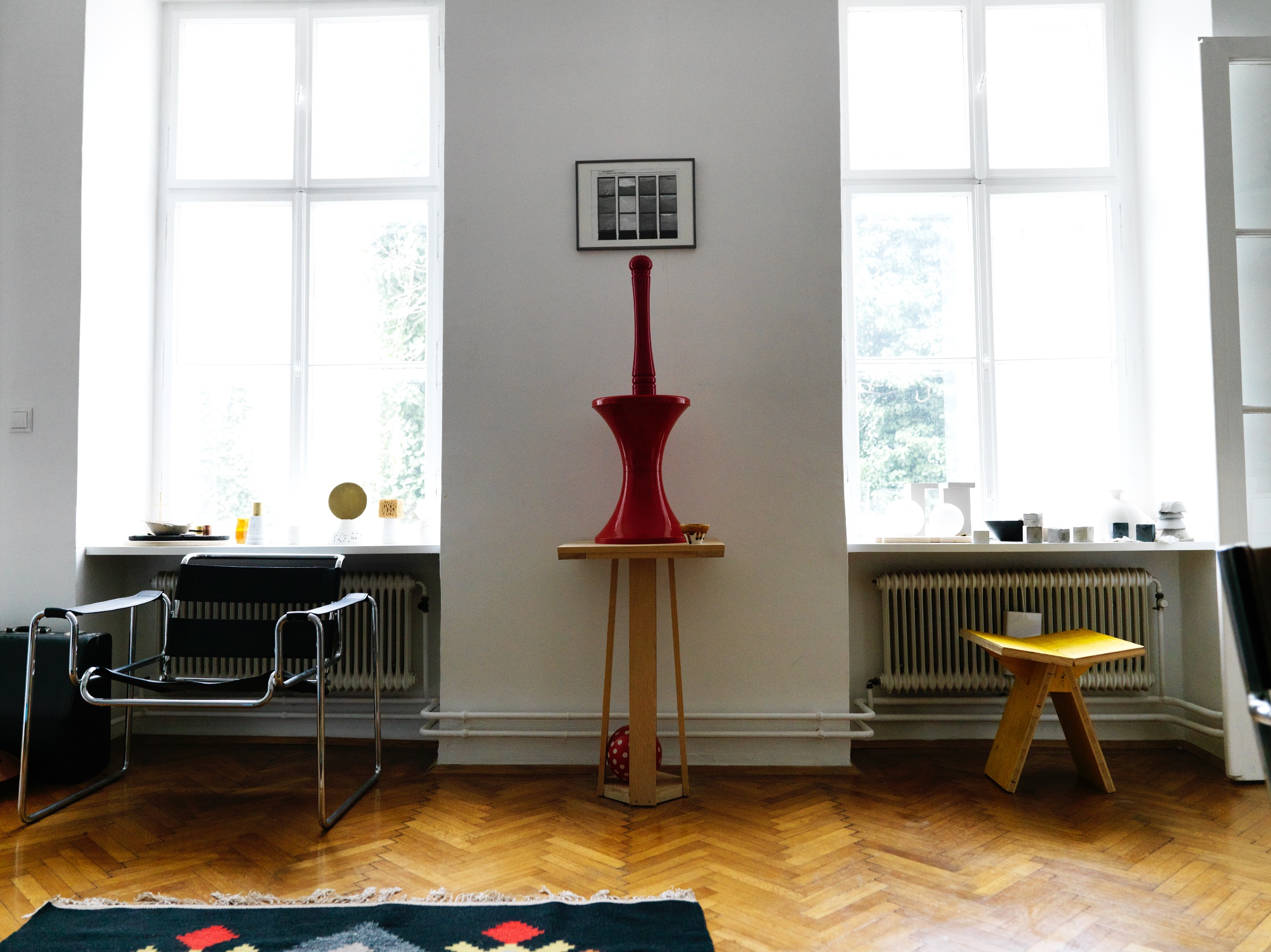
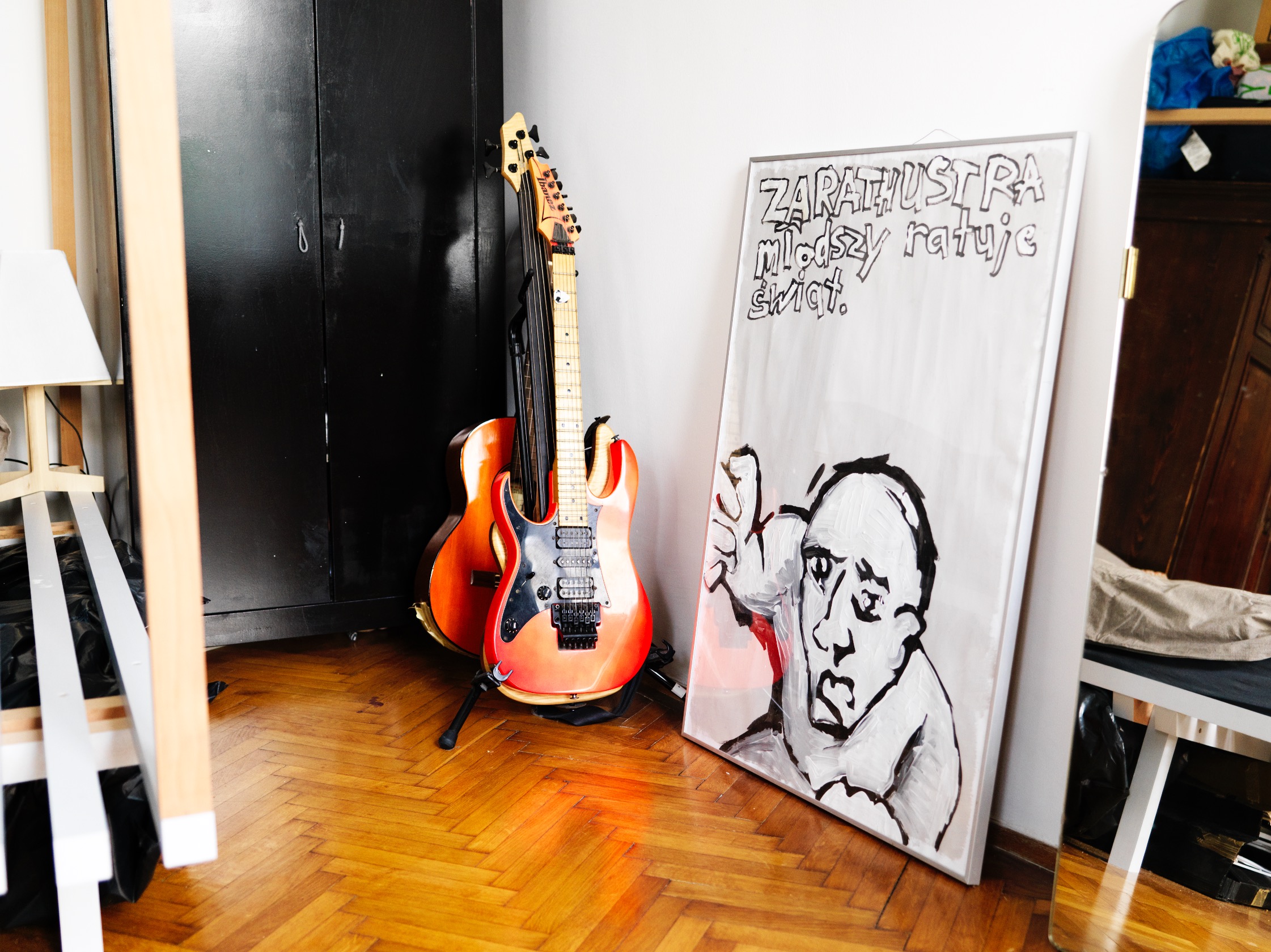
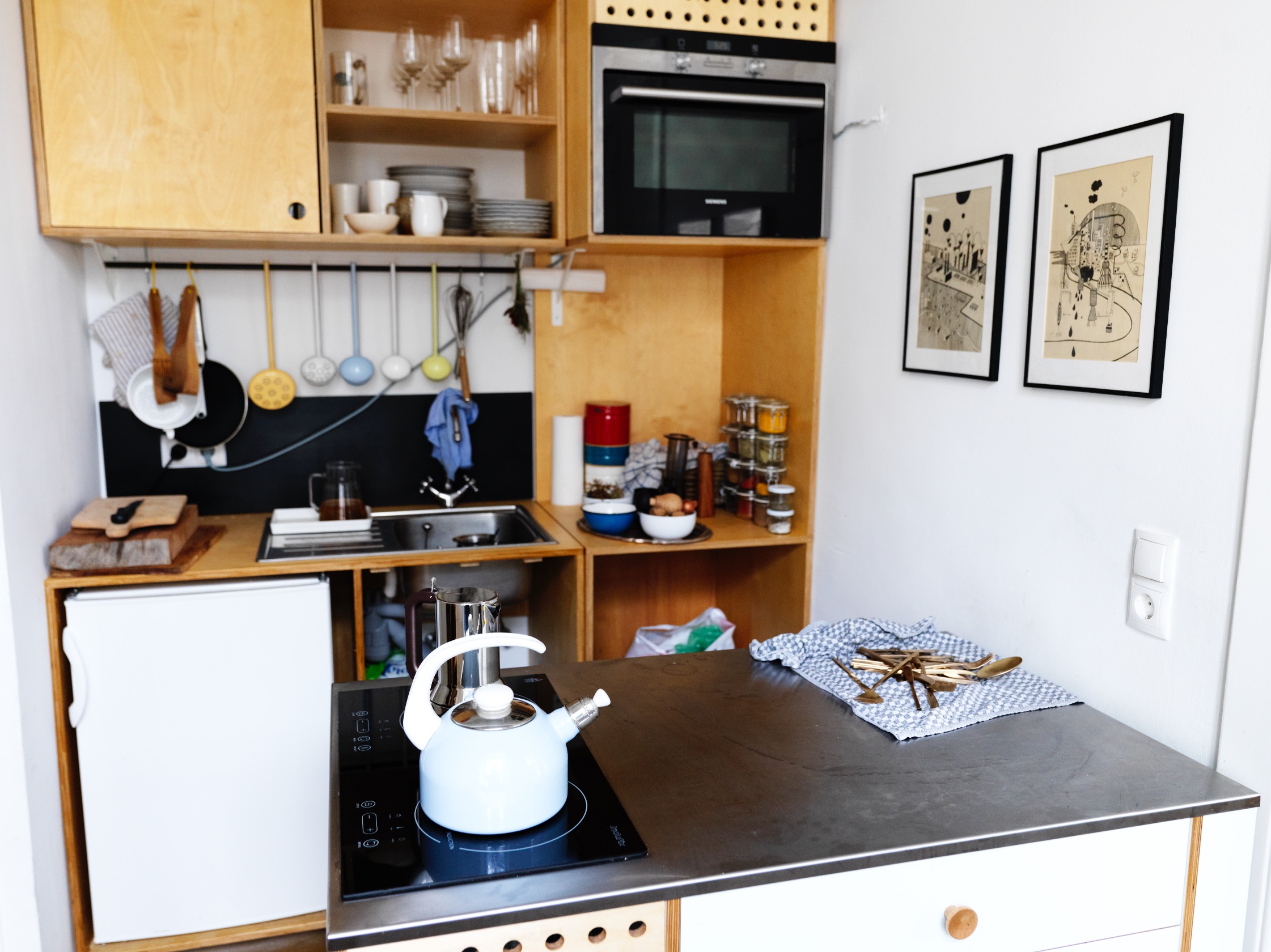
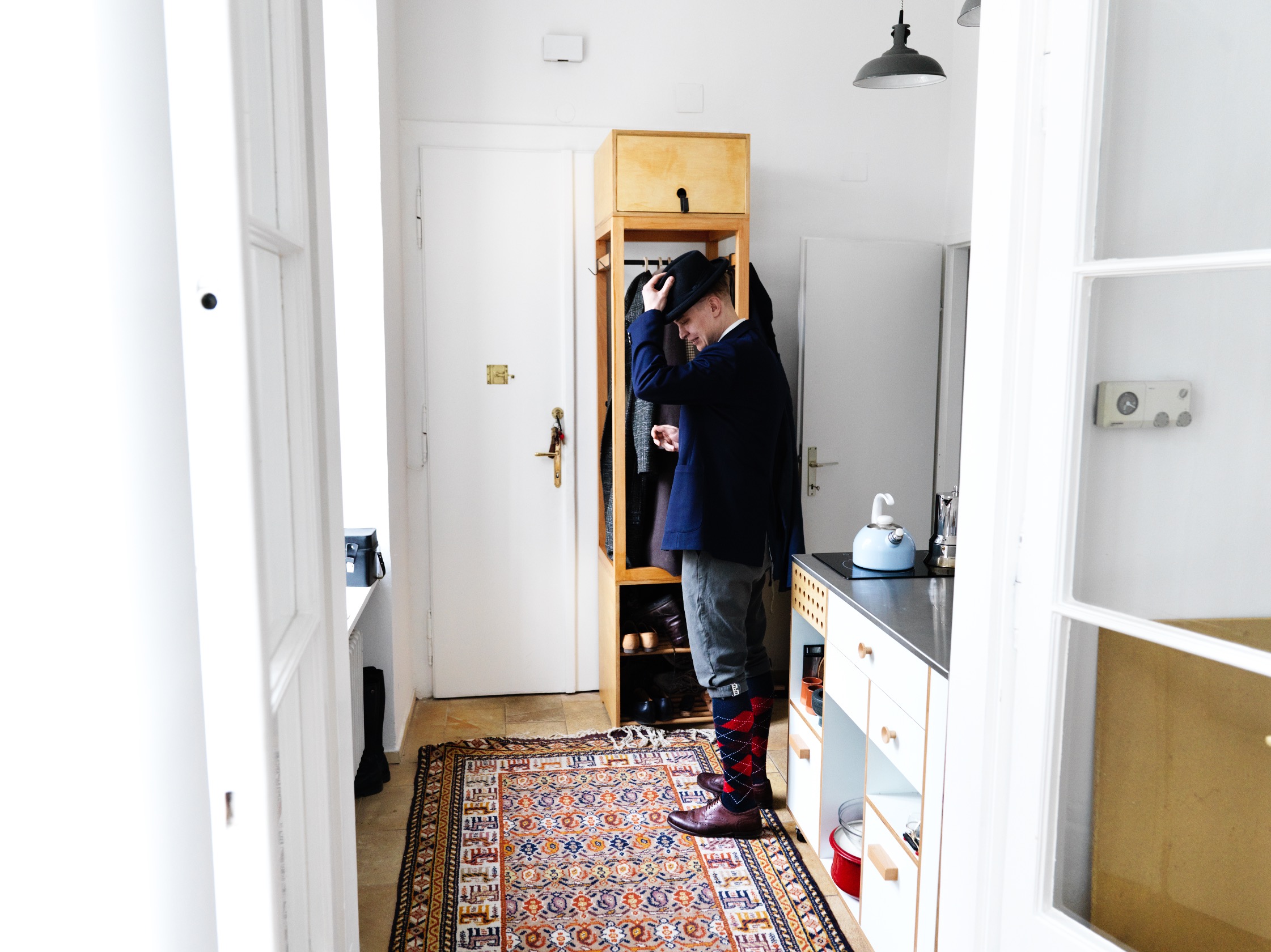
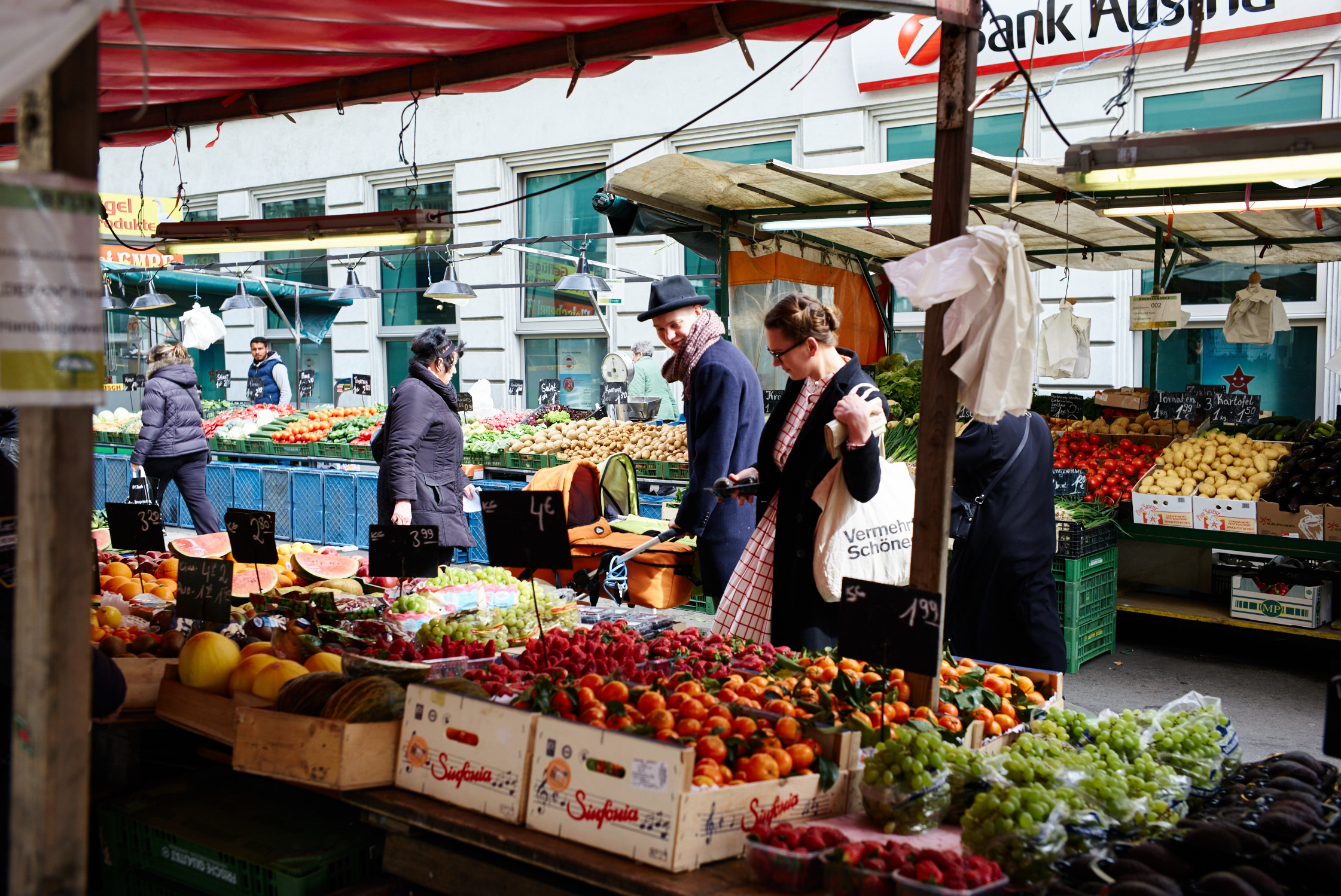
-
The angle of finding solutions to problems could generally be referred to as the basis of your work, right?
Ania: Yes, this approach is very typical of our projects. We think about answers to questions and the needs of individuals. We have a very theoretical approach.
-
Are you actively researching or addressing the problems in your everyday surroundings?
Maciej: We like to find functional objects that don’t exist yet and, at the same time, to ask the question: Why didn’t this exist before? Function isn’t always easy to design.
-
How do you define function?
We don’t believe in the concept of function that has emerged in the modern age. We define a very wide range. Acoustics are a function; the psychological influence on the user is a function. And also aesthetics. We realize that beautiful things survive because of their form and are thus sustainable. This is an important aspect.
The geometric and essential shapes of our products are deliberately designed so that they can also have an effect in a two-dimensional form. In a sense, we see objects as a logo. Every object must in and of itself also be able to act in a minimized form, so that viewers keep it in mind.
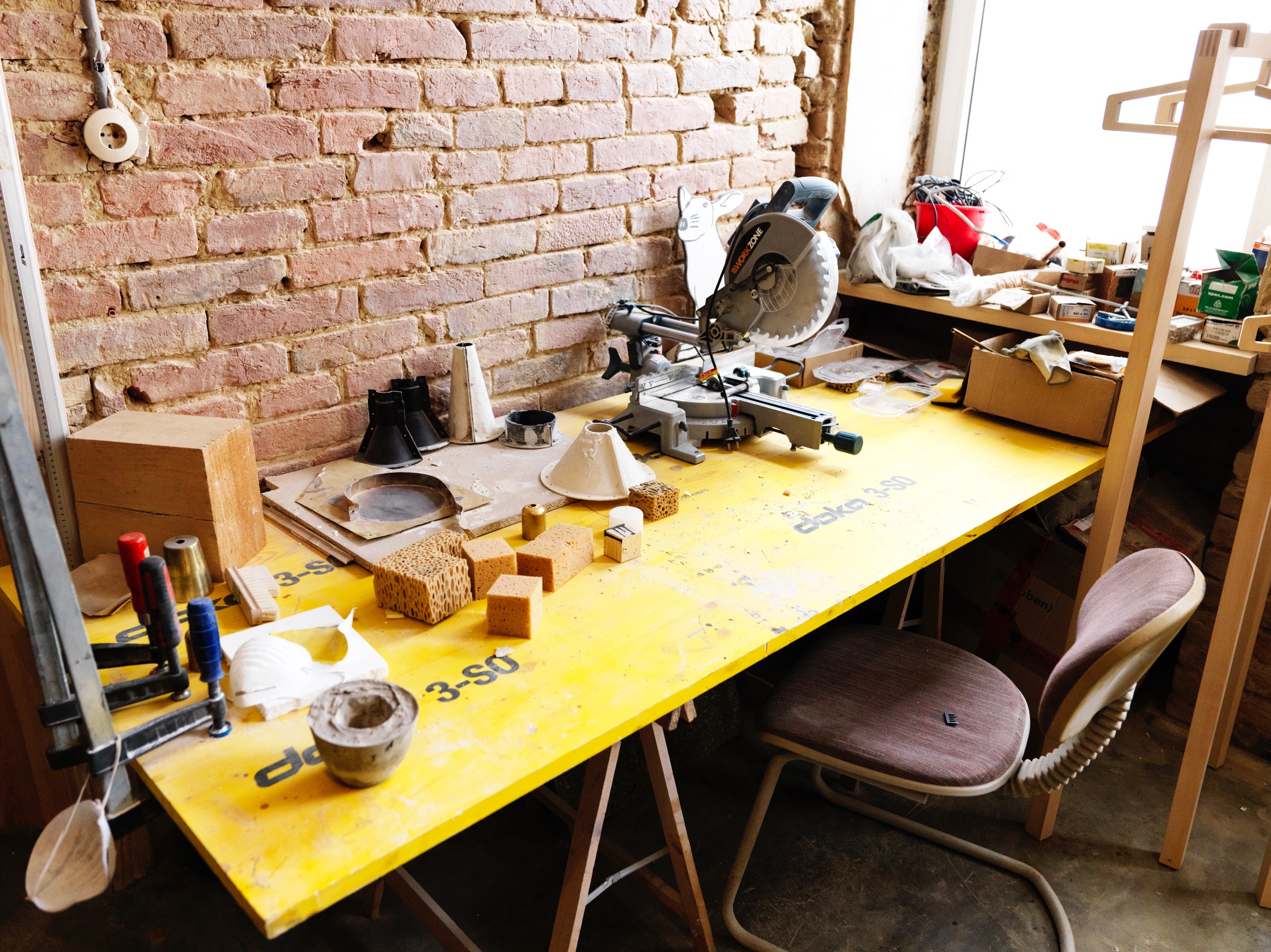
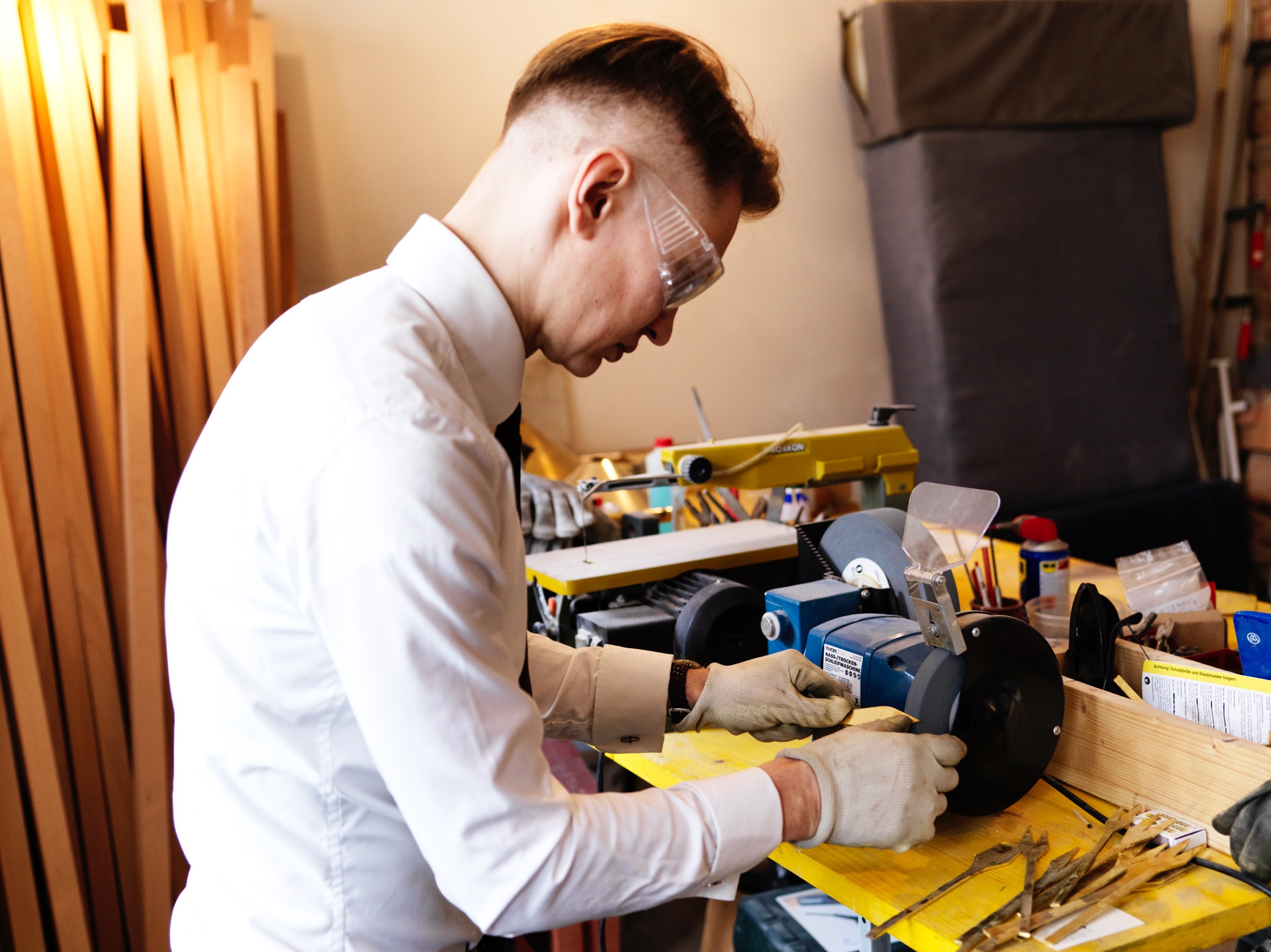
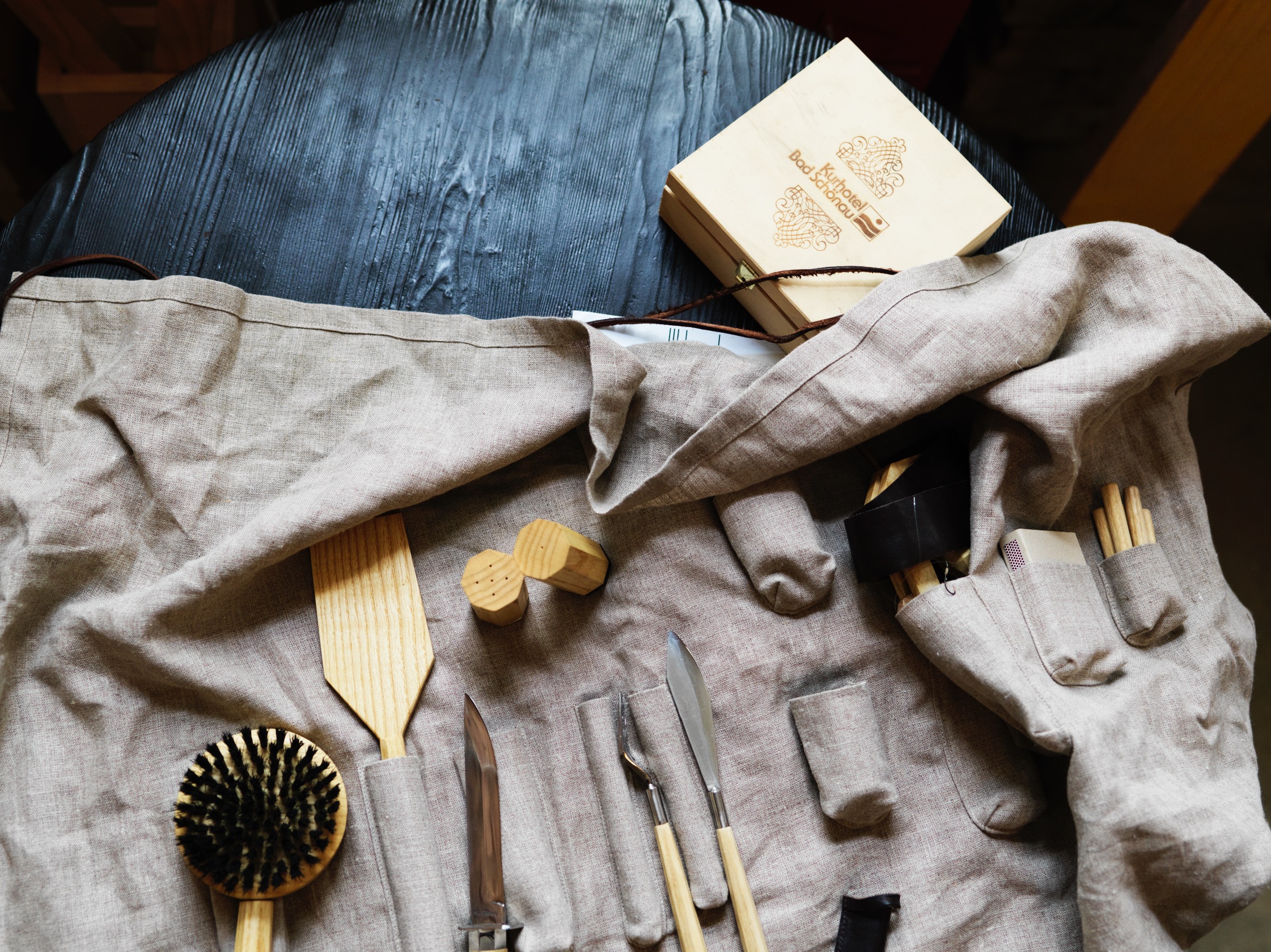
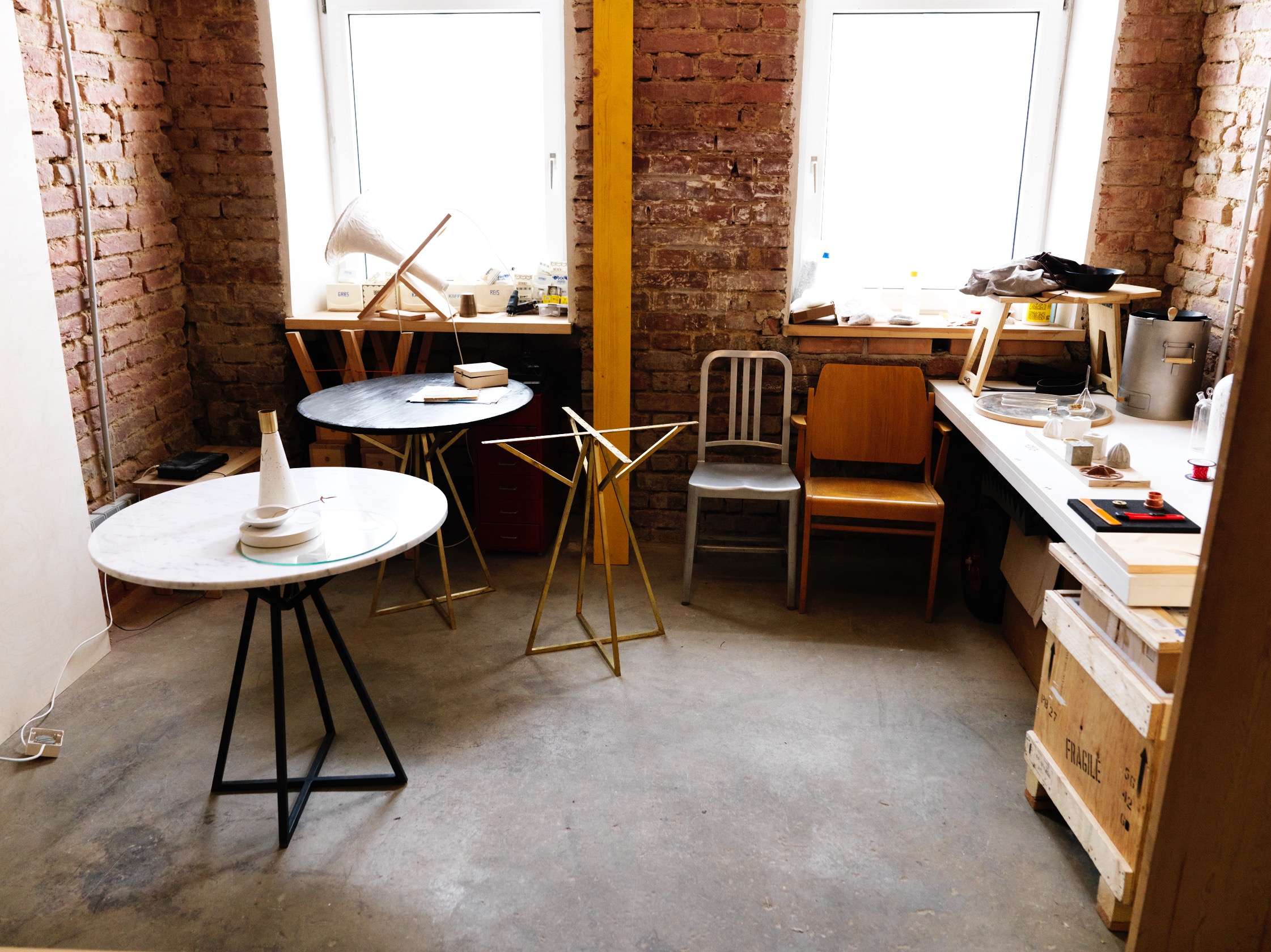
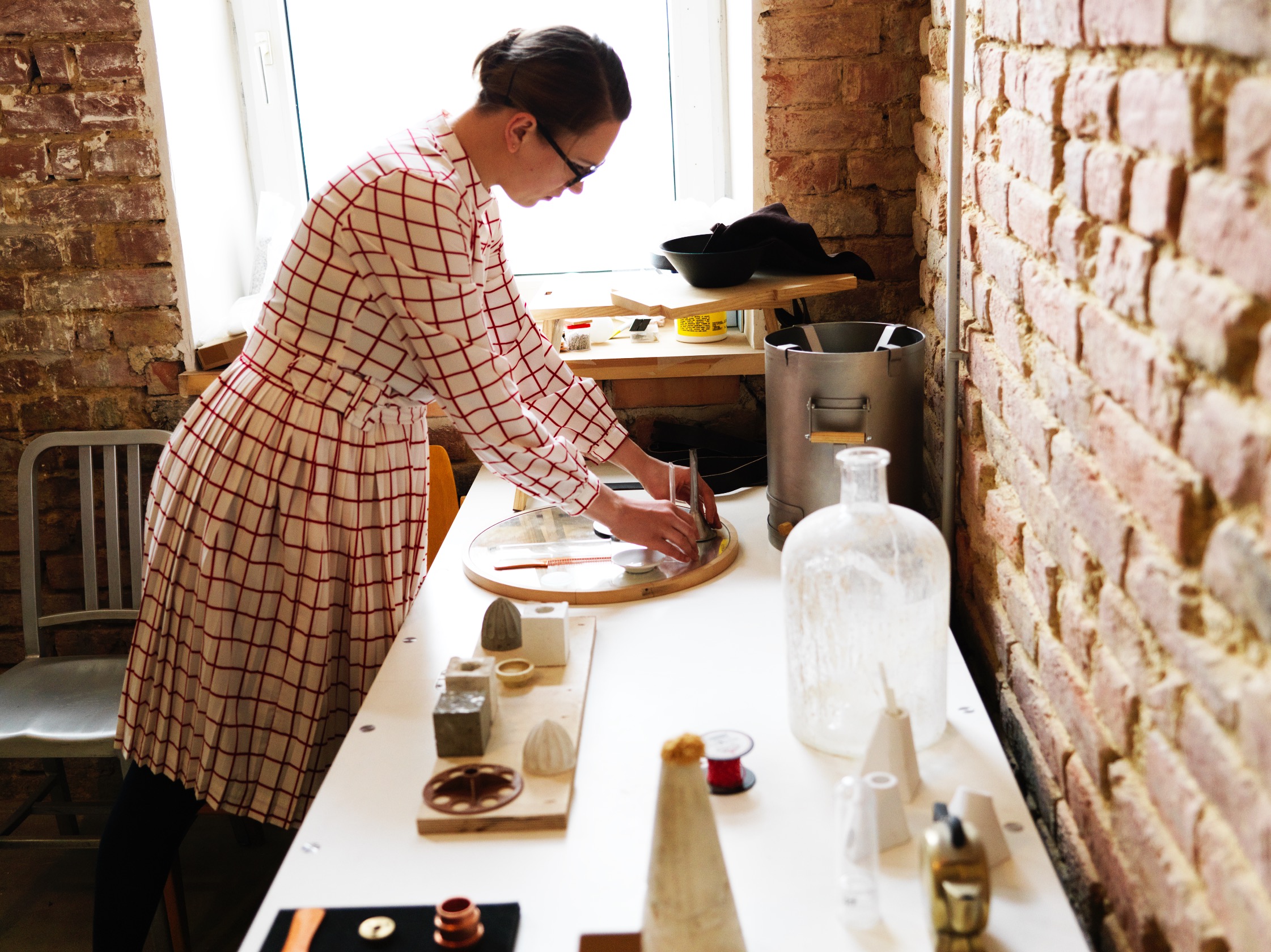
-
Why is there so much room for unsolvable problems, while, at the same time, the number of conceptual thinkers is constantly growing?
Starting in the 1950s a lot was rationalized away. People used to have much more furniture. There was a wider range of swings, armchairs and chairs that have later been eliminated thanks to the delusion of ergonomics. Today we’re no longer of aware of the needs that created these objects.
-
That’s a good approach. What isn’t there won’t be missed by those who don’t think about it.
Maciej: Exactly. We don’t appreciate our bodies in the right way. Today you have the choice between hard and soft pillows, but not between the exact same chair that is three centimeters higher or wider. It means that you adjust to it, but then the design idea itself is also lost.
-
What’s your biggest project at the moment?
Ania: Right now we’re working on an idea that has a lot to do with kitchens and food. Cucina Futurista 2.0 is a project that we won the Nespresso Scholarships with. There we address the holistic nature of food and food-related instruments. We transform the ideas into a kind of theatrical piece.
Maciej: This work is in part a new interpretation of the Futurist manifesto La cucina futurista published by Filippo Tommaso Marinetti. What’s exciting is that in the 20s and 30s he was far more advanced than haute cuisine, molecular gastronomy or any food designer today. He even helped partially design the clothing of the guests – upon entering the restaurant everyone had to change. The early 20th century had many haute cuisine restaurants with their own dishes and silverware designed by architects or designers. These are all ideas that are declared to be a luxury today and thus disregarded.
Ania: We want to go as far as possible with projects and together with different chefs and creatives we ask: how far can haute cuisine go today? How con something work next to the claim of being functional. How can you implement the main objective of creating a wonderful evening teeming with pleasure in which everything from the feel of the fork to the choreography of the waiters is right?
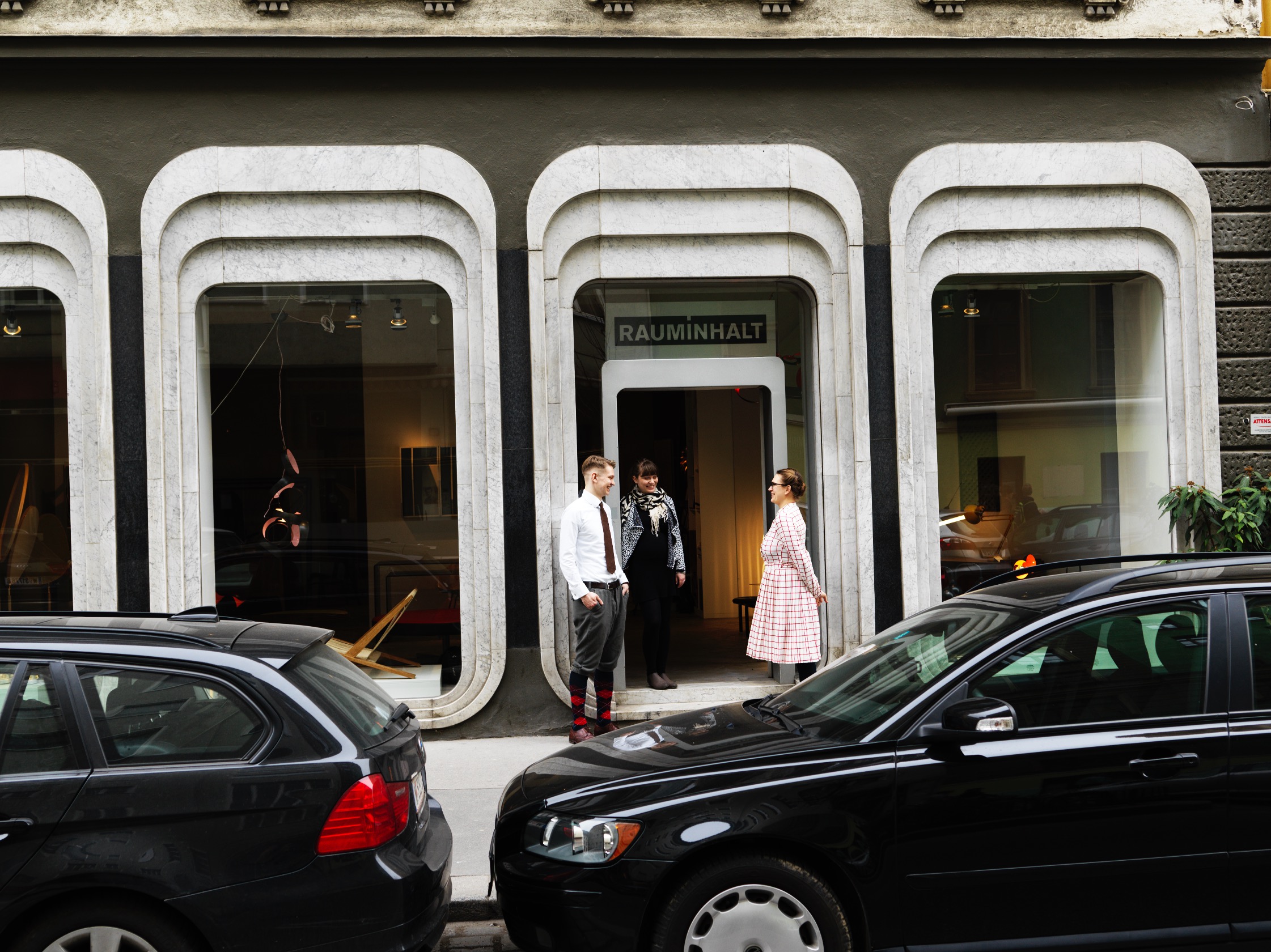
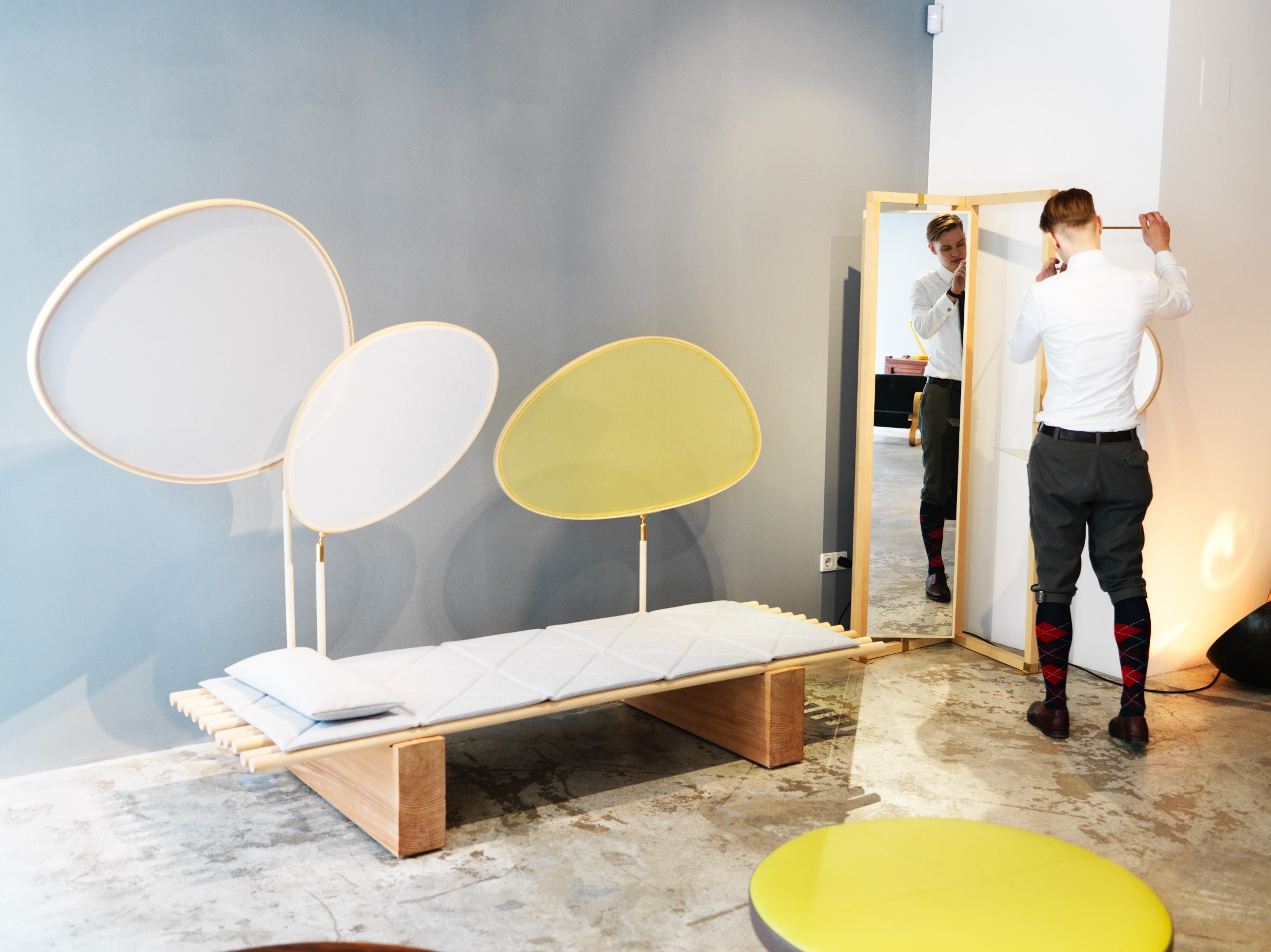
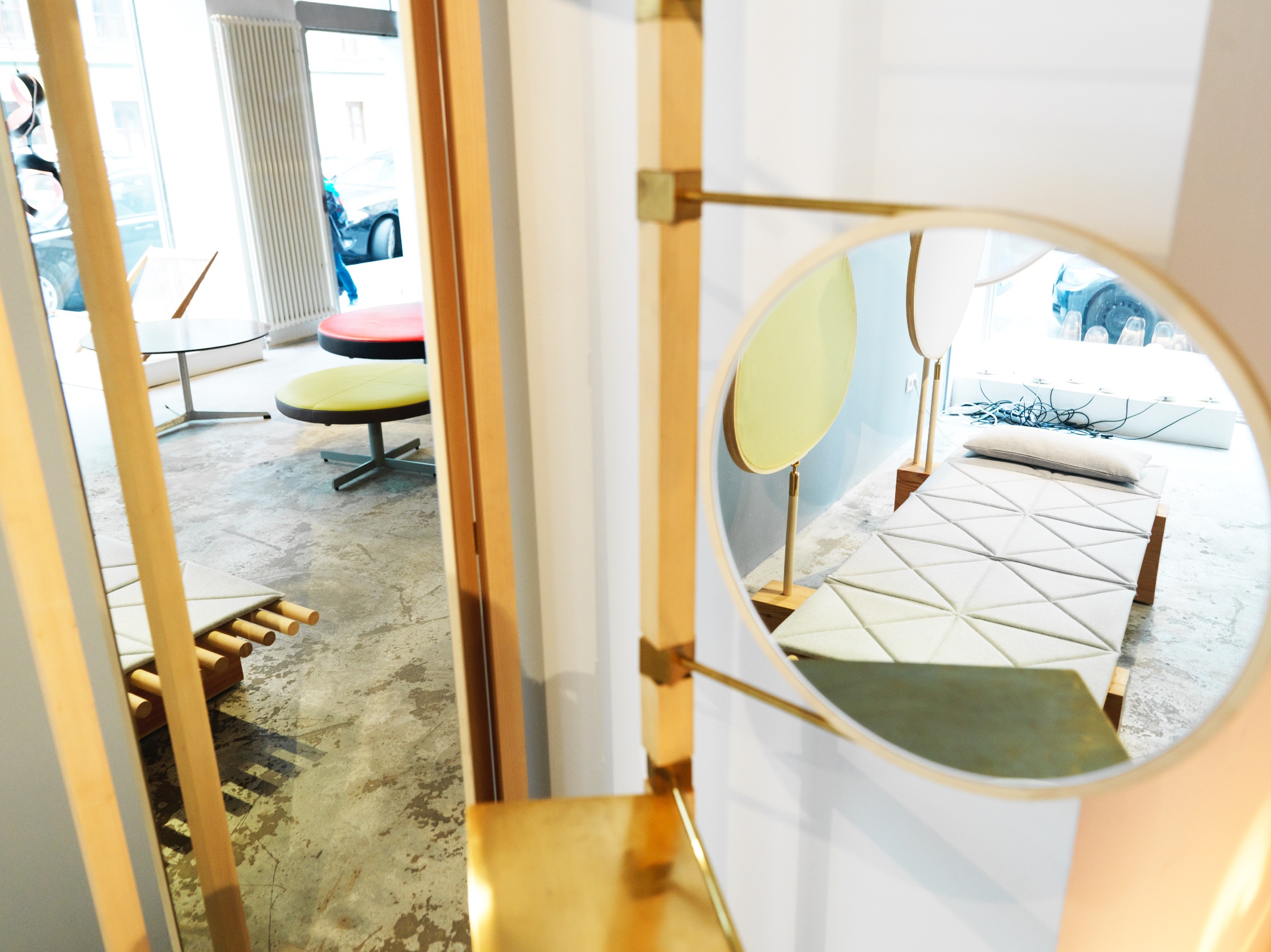
-
Does your work imply a scientific approach?
Maciej: To some degree design always goes hand in hand with research. The chair, called with Wassily Chair today, was developed in 1925 from Marcel Breuer. The cantilever chair in 1928. But these objects were first known in the 60s when the industrial and financial means were there to mass produce these objects. And when mankind was ready enough to even accept this aesthetic.
This is something really interesting. Design doesn’t have to be a service. Perhaps Dieter Rams would disagree with us and say something is art. I would disagree with Dieter. (laughs)
-
What are your favorite designs? Your apartment is a wonderful hodgepodge of so-called design classics and curiosities.
Ania and Maciej: We love our carpet.
Ania: It’s a Polish Art Deco tapestry from the 20s. It represents our definition of beauty.
Maciej: Other than that we have a lot of tubular steel furniture from the 30s. It can definitely be discussed aesthetically, but they were and are revolutionary. At the time there were outright hate speeches against the designer who first replaced wooden legs with steel pipes. The furniture is a really good object. And in their extreme timelessness and simultaneously serving as a manifest for the time, they are a special approach. We had a real tick for collecting, in that regards. What also fascinates us time and time again are objects from the postmodern.
-
Many of your pieces broach the theme of space and the use of space. In your opinion, in what direction will urban living develop? Are there certain tendencies that you have observed in the course of your research?
Ania: We are definitely moving away from the functionality of the 90s. We watch as our friends place more and more value on single objects and curated favorites.
Maciej: What’s interesting is that the potential of the rooms also changes. There are always fewer affordable places to live that you can customize on your own. This has an impact on cities like Vienna. For young people it’s really become difficult to rent spacious living spaces. The question is whether they are qualitatively worse or if you can solve them through design. Of course this is a topic that we’re also dealing with – especially with two children.
In the end, the objects that we’ve developed in relationship to the theme of space solutions have a very strong connection to reality. Designers and architects will have to respond to the fact that more and more people are moving into cities. I really hope that it goes in a very experimental direction and that we’re not just surrounded by smooth, shiny new elements in 20 years.
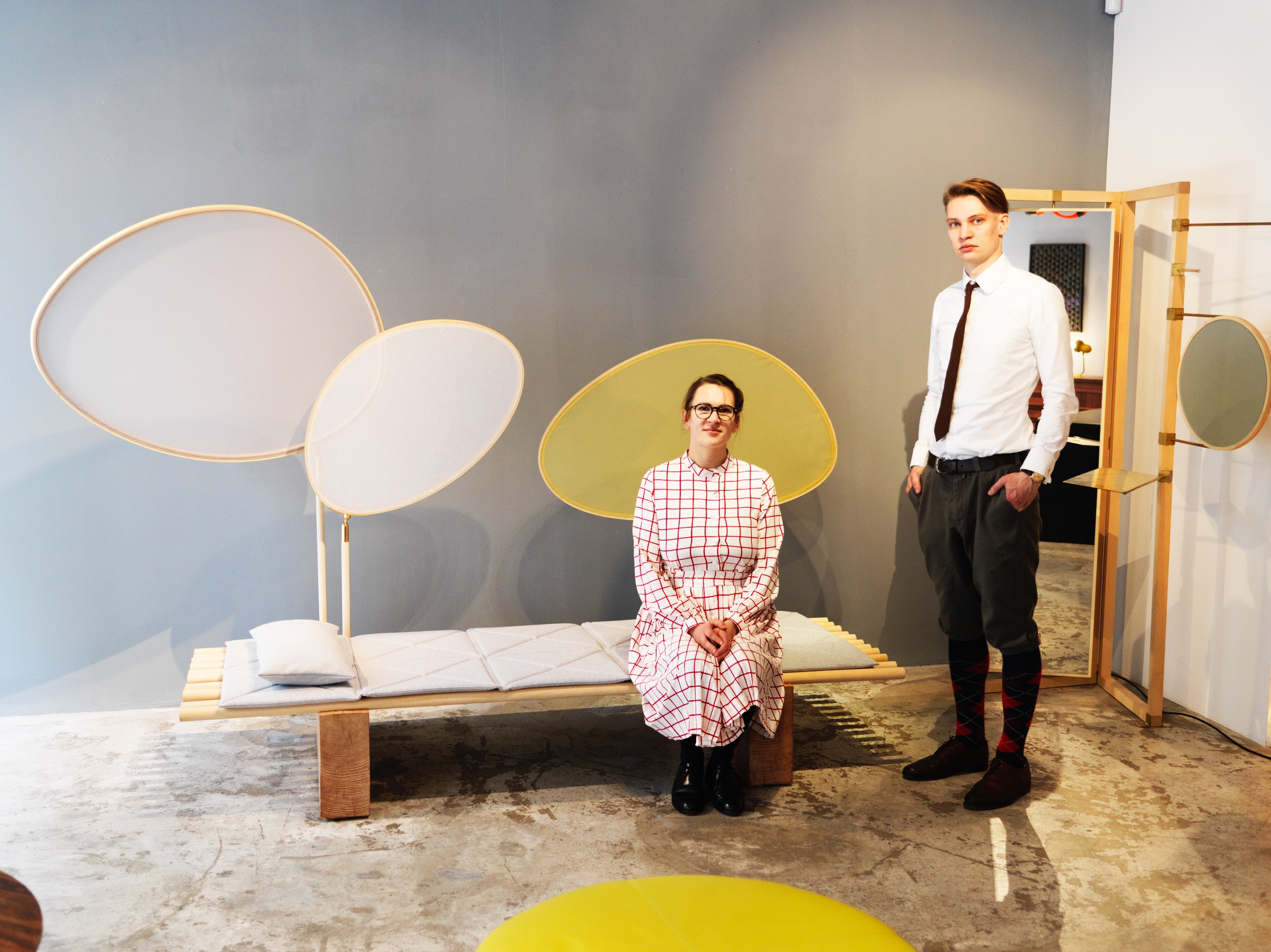
This portrait was produced in collaboration with the Vienna Business Agency and its creative center departure. This is the 20th portrait of this series – browse all the previous stories. We’ve chatted with a number of individuals who have defined Vienna’s creative scene, have a look.
Interview: Zsuzsanna Toth
Photography: Andreas Jakwerth
Video: Retina Fabrik
